

























Effective Contamination Prevention.
Low Maintenance.
Superior Low-Temperature Resistance.
Higher Chemical Resistance.
Minimised Condensation and Corrosion Risk.
Excellent Performance Under Harsh Operating Conditions


Mike Brandt Editor-in-Chief Motion+Drives Magazine
In today's ever-evolving industrial landscape, performance improvement is not just a goal but a necessity. At the heart of this transformation lie the motion components and systems that enable precision, efficiency, and adaptability across sectors and applications. From AI- enhanced bearing inspection to zerobacklash robotic couplings, each solution featured in this edition of Motion+Drives showcases the state of innovation to elevate motion control and system performance.
This issue dives deep into how motion component suppliers are not only delivering hardware but also engineering progress. Whether it’s optimizing NVH characteristics in gearboxes, integrating intelligent drive systems, or developing cleated belts tailored for dynamic packaging environments, these technologies are redefining operational excellence.
In our cover feature, we explore how the right components empower humanoid robots to move with human-like precision, while our technology spotlight brings you to the Faroe Islands, where SKF helps harness the moon’s gravitational energy. From chains built for the toughest applications to software platforms that unify reliability data, each story reflects a shared objective: enhancing system performance through smarter, more sustainable motion.
We invite you to explore the components, systems, and stories that are pushing the limits of performance. As the motion and drive technologies continue to evolve, Motion+Drives remains your trusted source for the innovations that power progress.
Enjoy the read and stay in motion,
I hope that you will enjoy it.

Editor-in-Chief
Mike Brandt
Editorial Team
Thomas Johnson
Mia Mctigue Rodriguez
Dize Purde
Guest Editor
Naresh Kumar
Marketing
Tapaswee Dixit
Victor Vialet
Vincent Yang
Project Coordinator
Merve Zhunuskanova
: www.linkedin.com/company/motion-drives
: www.facebook.com/MotionDrivesmagazine
: www.twitter.com/motion_drives
: www.youtube.com/channel/ UChCnbcmjFPbLEkLZGdjEXIw


Wi-careTM wireless patented PdM sensor
POWER MANAGEMENT
Warranty for 5 years
Highest sampling rate on the market
IDNA : OVERSAMPLED-HIGH FREQUENCY
Earliest detection of the most common failure modes
Scan this QR code to discover more specifications ABOUT THE GATEWAY!


Discover Wi-careTM 130 specifications by scanning this QR code!

Bearing
Lubrication
Gearmesh
Cavitation
ATEX
100% WIRELESS
AI POWERED PLATFORM : I-SEE SLOW SPEED DEFECT DETECTION PIEZO TECHNOLOGY
13

Components & Technology How motion component suppliers can guide humanoid performance improvements
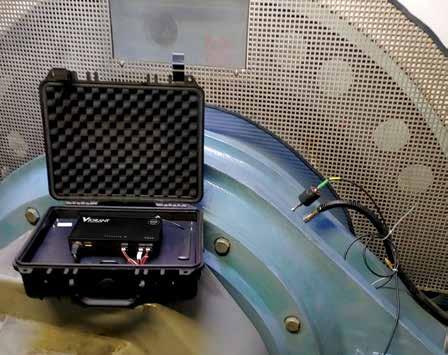
Condition Monitoring Vigilant: Enhancing wind turbine efficiency
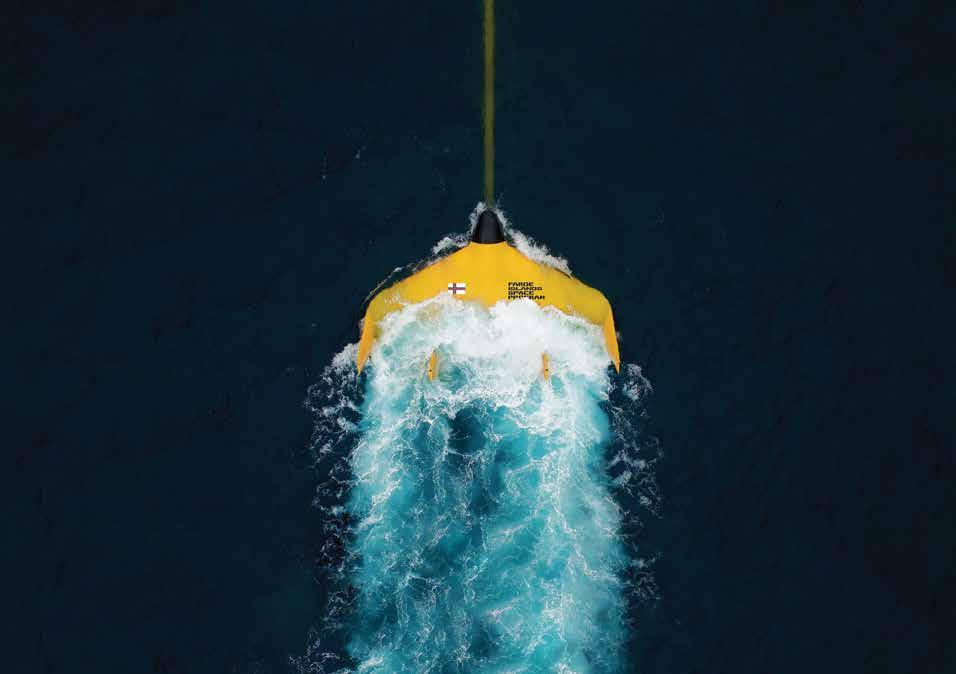
30

Gearbox technology NVH Optimization and Production Tolerances
45
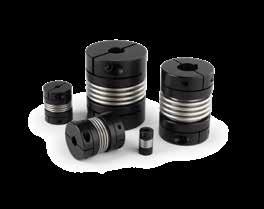
Couplings Bellows couplings for robotics
36

Bearings NTN brand applied on spherical roller bearings, italian origin.

Chains Ultimate Power Chains: Uncompromising Strength for the Toughest Applications
17
22
Technology Harnessing the Power of the Moon: SKF's Role in the Faroe Islands Space Program
41

Belts & Belting Ydins Custom Belts with Interchangeable Cleats: Versatility and Efficiency for the Packaging Industry

Drive Systems How NORD solutions intelligently control movements
55
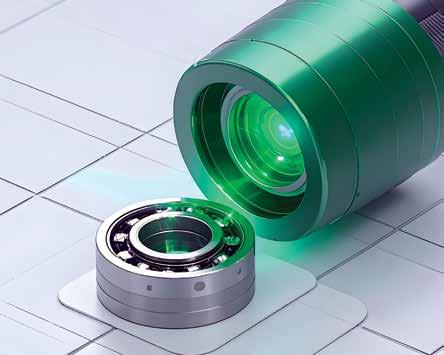
AI Technology
AI Meets Precision: How K2TECH Is Redefining Bearing Inspection

Sustainability
58
A unique process: Flender uses waste heat from its in-house hardening facility to heat buildings

Equipment
JTEKT Mounting Tools
75

Food & Beverage Bearings
Surface Treatments that Double the Bearing Life,Solid Oil, and 100% Hygienic Protection

62 65 68
Market Analysis
Emerging Tech Shaping the Landscape of Manufacturing Across Europe
78

Steel Application
Revolutionizing Cold Rolling: The Role of Backup Rolls in Tension Levellers


Food & Beverage KHS technology boosts value creation in the production process at Schweppes Zimbabwe
82

Belts & Belting
QST System – The smart choice over Standard Straight Tooth Profiles: Insights from LogiMAT 2025
84
Applications
Achieving bearing application stability - Designing with heat dissipation in mind

Motors @ Components Ex p motor configuration from stock components

95 Motors ArnonTM Electrical Steel Makes Smaller, Lighter, More Efficient Motors and Generators Sensors

Lifting
90
One of the largest deployments of axle lines and the heaviest module ever lifted Worldwide

97 Sensors Optical Ex-i level sensors with more process interfaces

99 Sensors Customized special sensors made in Germany

100 Software Emerson’s Asset Management Software Unifies Equipment Reliability Data in a Secure, Easy-to-Use, Integrated Platform
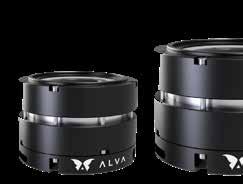
109 Company Alva Industries Announces Partnership with RLS to Provide Housed Motor Evaluation Kits

103

Industrial Technology Southco: Idnet - Revolutionizing Workstation Management with Southco Monitor Mounts
111

Industry Standards
HARTING supports the extension of IEC 63171-7 and is helping to shape the new connector standard for Single Pair Ethernet
Sustainability GoGreen
106

Academia Professors in AI from leading universities exchange ideas with Ziehl-Abegg

112 Powertrain Motion Control Solutions from Regal Rexnords

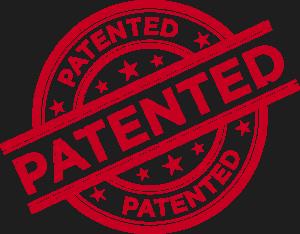

Elevate your machinery’s performance through innovative ultrasound measurement technology and automatic bearing lubrication. Ultrasound





We would like you to take advantage of our design co-operation service from initial application appraisal, through costing and prototypes, to ISIR and PPAP approval and production supply of your rod based Linkage assemblies. They can be supplied loose for final adjustment at the point of fit, alternatively, where required, by using length setting gauges and tooling, linkages can be supplied to pre-determined fixed centres. The flexible manufacturing techniques used in the production of linkage components allow non-standard derivatives to be readily manufactured. We produce hundreds of customer specials with varying dimensions, thread forms and features. We welcome your enquiries - please contact us at sales@btl-uk.com
BTL-UK is proud to be a committed European manufacturer of Dunlop brand Bearings, Power Transmission and Linkage components. We believe in the future of European manufacturing and will continue to focus and further enhance the requirements and expectations of our customers globally. As a proud manufacturer we want to help Europe’s industry flourish and to meet the world’s evolving appetite for innovative designs and responsibly produced quality manufactured products.
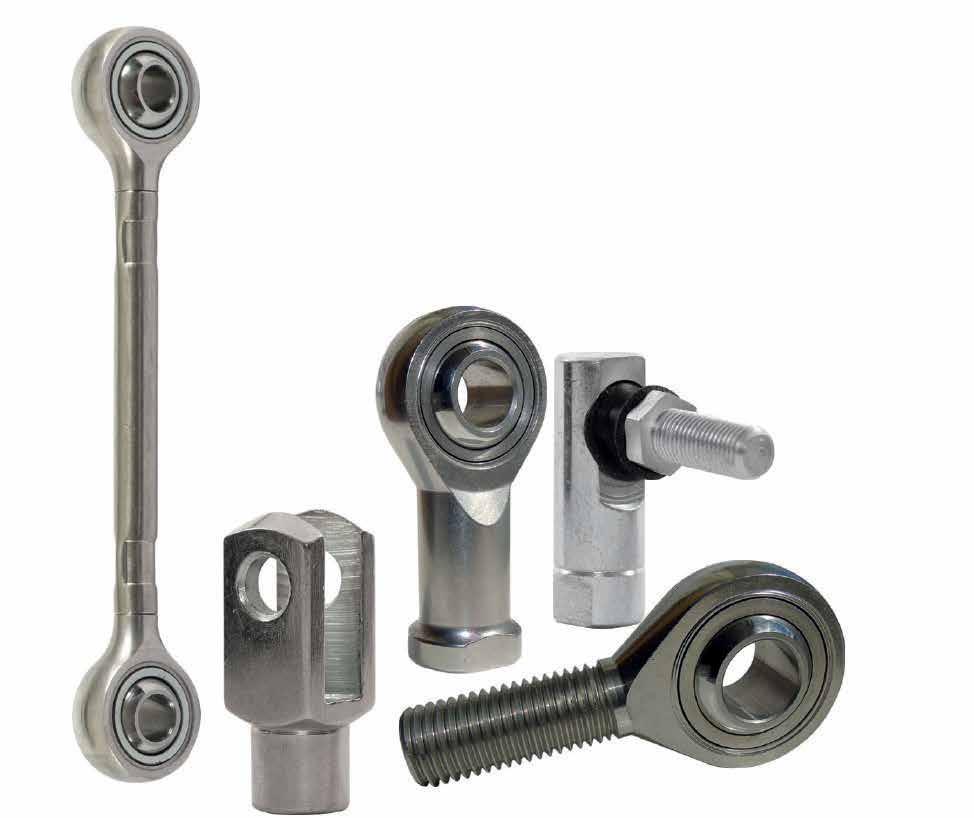






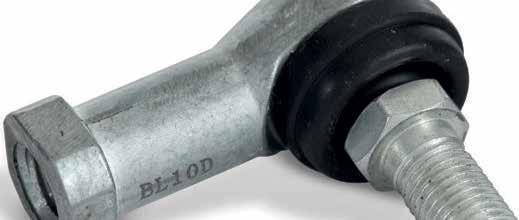


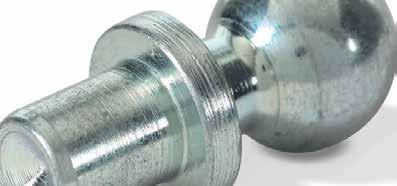

Dunlop linkage components such as Rod Ends, Spherical Bearings & Ball Joints are proudly manufactured in the UK and are used to transfer mechanical motion. Whether that motion is shifting the cutting height in a lawnmower or controlling the exhaust valve on an articulated lorry, we specialise in the supply of these products to bearing distributors and to some of the World’s most well-known original equipment manufacturers.
A wide range of materials are available, steel, stainless steel, plastic, bodies with options of bronze, nylon, PU and PTFE liners and with over 100 plating specifications we are sure to meet your customers heat or corrosion resistant requirements.
We believe our range of Dunlop rod ends, spherical bearings & ball joints are the largest range available throughout Europe.
Please visit www.btl-uk.com for further information.

BTL-UK LTD - Head office & European Distribution Centre MPT House, Brunswick Road, Cobbs Wood Industrial Estate, Ashford, Kent, TN23 1EL United Kingdom
BTL-UK LTD - Production Site Units 6&7 Hilton Road, Cobbs Wood Industrial Estate, Ashford, Kent, TN23 1EW United Kingdom
BTL-UK LTD - Production Site Unit 22, Albert Drive, Burgess Hill, West Sussex, RH15 9TN United Kingdom







How motion component suppliers can guide humanoid performance improvements
Today’s humanoid robots are performing tasks that until recently were considered impossible thanks to advanced functions that go hand-inhand with high-performance motion components. Although the latest-and-greatest components may seem appealing, they may not meet all your design objectives. That’s why it’s important to carefully consider several factors inherent to humanoid systems. This blog post will present some objectives designers commonly face when specifying motion components to improve their humanoid’s performance and functionality, along with ways component manufacturers can help them navigate the trade-offs.
When increasing system performance in humanoids, engineers are only limited by their ability to conceive how to achieve their motion goals. Humanoid designs come with trade-offs that typically mean asking difficult questions and having a trusted motion component supplier assess their needs, educate them on their options and help provide answers. It pays to work closely with your component manufacturer when your humanoid design objectives include:
• Motion control. Any joint that needs to pivot, turn, rotate or oscillate will require motion components. But to mimic human movements, various joints and actuators will need to perform in concert. That makes motion control an important element to the design. As an example, here are some of the issues involved in achieving high precision and smooth rotation in a traditional robotic joint: Although two thin section bearings can do the job, they will consume a large amount of space and come with a high cost. IKO crossed roller bearings (CRBs) can eliminate the two bearing system because they integrate two bearings into one platform via rollers arranged in an X pattern. This allows them to handle large axial, radial and moment loads simultaneously to perform complex tasks while saving space. IKO can also do customizations such as adding flanges or different bolt patterns to simplify installation.
• Fit the existing work environment. To get a humanoid to perform in a distinct work environment, advanced motion control strategies are often necessary. For example, a robot must handle an object at a shelf height or depth that a person may not be able to reach. The right motion component manufacturer can add linear extending mechanisms to arms or legs, or modify a torso to create a physical structure that can overcome a humanoid’s physical limitations and adapt to an existing work environment.
• Minimize maintenance requirements. Reducing and predicting maintenance needs are important aspects when designing motion systems that will be expected to consistently perform tens of thousands of times without degradation. While some components with integrated sensors can, for example, alert operators to mechanical damage, IKO strives to manufacture products that are maintenance-free over the life of the application.
When it comes to improving motion systems in humanoids, engineers should look beyond previous successes and keep abreast of the latest components along with their features, capabilities, benefits and customization possibilities. That also means seeking solutions early in the design process, considering options and tailoring the best one to the robot’s requirements. At IKO, we offer a wide lineup of linear roller guides, crossed roller bearings, spherical bushings and cam followers that are well-suited for delivering smooth, accurate motion in robotic applications. We’ll propose achievable yet practical solutions and modifications, as well as test and validate them to prove their efficacy in the field. When you partner with IKO, you’ll enhance your humanoid’s performance to match its functional requirements and workspace.
For more information, please visit https://ikont.com/robotics
Dodge products are built to last longer, even in the most demanding applications


Bearings & Housings • Belts & Pulleys • Chains & Sprockets
• Couplings & Drives • Linear & Automation • Maintenance
Products • Lubrication, Sealants & Adhesives

Rated Excellent
Export Customer
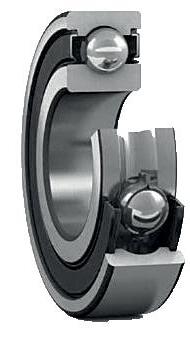
Very fast service & shipping, much less expensive than ordering locally. Very happy with my orders from ACORN!”
- Myles B, Export Customer
Wind turbines are pivotal to renewable energy production, yet maintaining their complex systems presents unique challenges. The Vigilant is a remote condition monitoring solution that integrates ultrasound and vibration analysis to address these challenges, offering a simplified and effective approach to wind turbine maintenance.
The importance of predictive maintenance in wind turbines
Wind turbines operate under harsh conditions, often in remote locations and exposed to extreme weather. Their components, (including blades, main bearings, gearboxes, and generators) experience continuous
stress. Failures in these systems can lead to costly repairs and downtime. Predictive maintenance, empowered by advanced technologies like ultrasound and vibration analysis, ensures early detection of faults, allowing operators to schedule repairs proactively rather than reactively.

1. Height and accessibility
Wind turbines often exceed 80 meters in height, requiring technicians to climb multiple times daily to collect data. This process is timeconsuming, physically demanding, and poses significant safety risks. Vigilant eliminates the need for frequent climbs by streaming real-time data to a central monitoring station, enhancing efficiency and safety.
2. Varying rotational speeds
Different components in a turbine nacelle operate at different speeds. The main shaft rotates as slowly as 10-20 RPM, while gearbox and generator bearings run much faster.
Traditional vibration analysis is less effective for slow-moving parts, where low-energy faults may go unnoticed. Vigilant’s ultrasound technology excels in detecting micro-level friction or impacts in slow-speed bearings, filling this critical gap.
3. Cost of unplanned maintenance
When critical components fail, repairs require heavy machinery like cranes and specialized teams. These interventions are not only expensive but also lead to extended downtime. Vigilant’s ability to detect faults at an early stage minimizes such disruptions, allowing for planned interventions and reducing overall costs.

Vigilant combines ultrasound's precision with vibration analysis's broad-spectrum capabilities, providing a complete picture of a turbine’s health.
+ Vigilant supports up to eight sensor inputs, continuously collecting data from critical points such as the main bearing, gearbox planetary bearings, and generator bearings. The system detects anomalies like friction, impacting, or turbulence, which indicate potential failures.
+ Equipped with Wi-Fi, Ethernet, or cellular connectivity, Vigilant transmits live data to a central platform. Maintenance teams can access this data remotely, reducing the need for on-site interventions and enabling quicker responses.
+ Vigilant’s intuitive web-based interface makes advanced data analysis accessible to maintenance teams, regardless of their technical expertise. It simplifies fault detection and facilitates informed decision-making.
Inside the nacelle: The Vigilant’s role in monitoring key components
1. Slow-speed main bearing
Ultrasound technology is particularly effective for slow-speed components like the main bearing. By detecting subtle changes in friction or impact levels, Vigilant provides early warnings of potential failures. For instance, in a recent installation, Vigilant identified an outer race defect in a slow-speed bearing that traditional methods missed, allowing technicians to address the issue before it escalated.
2. Gearbox bearings
The gearbox is one of the most critical and failure-prone components in a wind turbine. Vigilant monitors its planetary bearings for signs of wear, misalignment, or lubrication issues, enabling timely interventions.
3. Generator bearings
High-speed generator bearings are susceptible to wear and overheating. Vigilant’s dual ultrasound and vibration capabilities provide a comprehensive assessment of these components, ensuring reliable operation.
4. Blades and couplings
Vigilant’s acoustic sensors detect anomalies like cracks or looseness in blade couplings, safeguarding the structural integrity of the turbine.
Wind turbines are significant investments, and their reliability is crucial for maintaining profitability in wind farms. Vigilant contributes to operational efficiency by:
+ Reducing unplanned downtime
With early detection of faults, operators can schedule repairs during low-wind periods, minimizing energy production losses.
+ Extending component life
Proactive maintenance reduces wear and tear, extending the lifespan of critical components and lowering replacement costs.
+ Optimizing resource allocation
Remote monitoring reduces the need for onsite inspections, freeing up maintenance teams to focus on high-priority tasks.
In a notable deployment, Vigilant was installed on a 90-meter wind turbine in a remote location. The system continuously monitored seven critical points, including the slow-speed main bearing and gearbox bearings. Within days, Vigilant detected a lubrication issue in the main bearing and an impending failure in a planetary bearing. These insights allowed the maintenance team to address the problems proactively, avoiding costly downtime and repairs.
While Vigilant’s efficiency in wind turbines monitoring is undeniable, its capabilities extend to other critical assets in industrial operations. From detecting partial discharge in electrical panels to monitoring cavitation in pumps, Vigilant adapts to a wide range of equipment, making it a versatile tool for predictive maintenance across industries.
Conclusion
The Vigilant condition monitoring system is a great solution for maintaining wind turbines efficiently and cost-effectively. By integrating ultrasound and vibration analysis, it addresses the unique challenges of turbine maintenance, from accessibility issues to the complexities of monitoring slow-speed components. For wind farm operators seeking to optimize reliability and reduce operational costs, Vigilant offers a robust and reliable solution.




As the world accelerates its transition toward renewable energy, innovative collaborations are reshaping how we think about power generation. One such groundbreaking initiative is the Faroe Islands Space Program—an Earth-bound venture that leverages the Moon's gravitational pull to generate clean electricity through tidal forces. At the heart of this project is the Dragon 12 (LUNA), an advanced tidal kite developed by ocean energy company Minesto, with critical support from global bearing and technology leader SKF. By integrating smart bearing systems, real-time monitoring sensors, and sustainability-focused software tools, SKF is helping optimize the kite’s performance while minimizing its environmental footprint.
To learn more about the cutting-edge technology and sustainable impact behind this pioneering effort, we spoke with Annika Ölme, Chief Technology Officer and Senior Vice President of Technology Development at SKF. In this conversation, she shares insights on SKF’s role in the project, the future of tidal energy, and how crossindustry collaboration is unlocking new pathways to cleaner, more reliable power solutions.
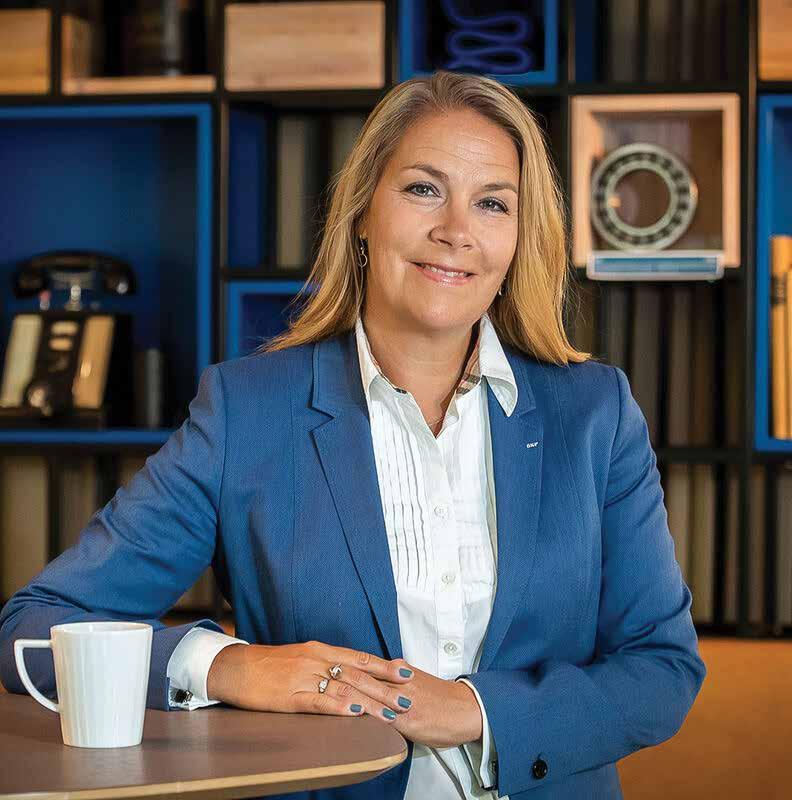
It
takes trust, courage and creativity to embark on a daring, yet 'down-to-earth' project like the Faroe Islands Space Program.
Annika Ölme, Chief Technology Officer and Senior Vice President of Technology Development at SKF

SKF has developed cutting-edge bearing and sensor technologies for the Dragon 12 tidal kite—can you elaborate on the most challenging technical innovations involved in adapting these components for underwater use?
Since the Dragon 12 tidal kites operate deep down in the Atlantic Ocean, there were great challenges we needed to tackle from a parts perspective. The kites fly at speeds of up to 16 knots at a depth of 60 meters. During operation the turns are smooth, but the system must also be able to handle acceleration. So, designing the right bearings and seals to endure these conditions was critical. That involved not just choosing the most suitable bearing type but also dimensioning the bearing to be robust and reliable, while at the same time optimizing bearing arrangement for minimal friction. In terms of the sealing arrangement, we faced challenges related to shaft deflection, water pressure, and low friction. In combination with the design, a sealing material with good friction properties is needed in an environment with limited lubrication and high wear resistance to avoid being worn down by particles present in seawater. All of these factors were considered as we developed the bearings installed in the applications within the kite including the rudders and turbine, as well as the sealing system.
How does SKF’s SimPro Quick software enhance the efficiency and durability of tidal energy systems like LUNA? Can you give examples of its impact in this project?
Our SimPro Quick software evaluates and optimizes bearing arrangements, which allows SKF and Minesto
to perform detailed performance evaluations of the bearing arrangements within the Dragon 12 tidal kites based on specific requirements and conditions. With this project taking place in the depths of the Atlantic Ocean, we have to account for various marine conditions like salinity, water temperature and water pressure. Being able to analyze bearing performance in real time is critical so that we can adjust and improve, ensuring the kites are operating with the least amount of friction possible.
Real-time monitoring seems to be a key feature of this system. How do SKF’s vibration and temperature sensors contribute to preventive maintenance and operational reliability in such a harsh marine environment?
Since this project is focused on harnessing energy and fueling the villages of the Faroe Islands, preventing downtime is imperative. SKF’s sensors, which are installed on the turbine in the Dragon 12 kites, measure vibrations and temperature during operation to monitor the turbine and detect abnormal frequencies. This enables planned maintenance and avoids bearing damage and unplanned downtime.
SKF emphasizes sustainability in its approach. How does your Product Select tool support customers in reducing CO2 emissions through better bearing choices?
Our product select software tool calculates bearing rating life and estimates CO2 emissions, among other attributes, so that different solutions can be compared not only from a technical standpoint but

also through the lens of sustainability. Providing this level of support when it comes to decision-making for our customers reinforces our mission to drive innovation in renewable energy.
How do you measure and verify the environmental impact reductions achieved through SKF’s technologies in the Dragon 12 project?
Research shows 20% of all energy consumed globally is used to overcome friction, and this is particularly important when producing energy as you want all production to go to the electrical grid and not disappear as friction. Our bearings and seals are
designed to reduce the amount of friction produced, which is also monitored through SKF sensors mounted in the kites. By measuring the operational data, we get a good basis for optimizing the system so that the kites can perform more efficiently.
What has the collaboration with Minesto taught SKF about cross-industry innovation, and how might it shape future projects?
This project has truly underscored the critical role of cross-industry collaboration and knowledge-sharing in accelerating innovation, advancing the shift to renewables, and shaping a more sustainable energy


future. It takes trust, courage and creativity to embark on a daring, yet “down-to-earth" project like the Faroe Islands Space Program. All of us – SKF, Minesto and Sev – were aligned on our goals from the start and that propelled us forward together. We believe that our program serves as a blueprint for broader cooperation across sectors.
In what ways is the partnership with Sev and the Faroe Islands helping demonstrate a model for tidal power adoption in other remote or coastal regions?
Through the Faroe Islands Space Project, we’re showing the world that there are untapped renewable energy sources still to be explored. Sev and the Faroe Islands share the same vision as SKF of a clean, responsible, net-zero future. Ocean energy currently is a small part of the renewable energy mix. But Minesto estimates there are at least 3,000 more “Faroe Islands” out there qualifying for our space program. Our program demonstrates that harnessing the energy of the moon is possible and coastal regions can start exploring this avenue for sustainability today.
Do you see SKF’s technologies being adapted for other ocean energy projects beyond tidal kites— such as wave energy converters or offshore wind installations?
The Faroe Islands Space Project is one of a few that SKF is involved in regarding ocean energy.
We believe it's an energy of the future and are eager to explore different avenues of optimizing and preparing ocean energy technologies for commercialization. We’re a part of multiple EUsponsored projects that are exploring the use of turbines, floating tidal energy systems and sub-sea tidal farms. Ocean energy is expected to supply at least 10% of global energy in the future. Additionally, a new report from Ocean Energy Europe characterizes ocean energy as an opportunity to deliver on decarbonization and deliver homegrown renewable power in the EU. SKF is committed to supporting this evolving industry through the development of cutting-edge technologies and bringing them to market.
Given the potential to replicate this system in “3,000 more Faroe Islands,” what role do you envision SKF playing in scaling up this technology worldwide?
It has been such a rewarding partnership with Sev and Minesto, and our goal is to bring more qualifying nations into the space program. If all of the 3,000 others join the program, moon power could replace all coal power capacity currently under development globally. We are collecting and analyzing data from Luna’s condition monitoring sensors as it flies in the ocean, so that we can learn and improve the performance of the kite. Minimizing the friction in each individual piece of the kite, as well as optimizing and industrializing the assembly of all components, will have a huge impact when scaling the technology.

We see our roles in engineering as well as delivering premium components as key enablers of the scaling of this technology and we’re committed to playing a part in its growth.
Looking ahead to 2030 and beyond, how does SKF’s investment in projects like the Faroe Islands Space Program align with your long-term vision for industrial sustainability and clean energy?
Our commitment to sustainability is rooted in
projects like the Faroe Islands Space Program. It’s just one example of how SKF works with customers to advance new approaches and innovations in energy technology development and across other sectors. We recognize the powerful role we can play in reducing friction in projects and applications worldwide. We’re focused on developing more and more of our products to become lighter, more efficient, longer lasting, repairable, and, ultimately, recyclable. So that wherever bearings are used, we have the opportunity to enhance efficiency and reduce friction.

The easiest way to build a conveyor!
Alhan Bipods and Tripods
Alhan Adjustable Bracket, Clamps, and Photocell Connection Equipments





Improving Performance and Sustainability in Gearbox Development

Resource efficiency and environmental protection are becoming increasingly important in modern transmission development processes, especially minimizing the CO2 footprint. These factors are critical for complying with regulatory limits and remaining competitive in a challenging market. Gearbox manufacturers are constantly increasing the power density of their transmissions to meet these requirements. This demands careful analysis and reduction of excess material reserves to optimize designs. The aim is to design gearboxes that meet customers’ lifetime needs with quiet, vibration-free operation. These are the key characteristics of good NVH performance.
Transmission development is an iterative process that often involves multiple design and test cycles to achieve the desired performance characteristics. Modern simulation methods play a key role, as they enable engineers to create virtual prototypes and predict the behavior of transmission systems under different operating conditions. This not only significantly shortens the development time, but also contributes to the cost efficiency of the development process. Proven tools like the FVA-Workbench [1] improve the design process with fast and reliable simulations.
In transmission development, an understanding of the influences acting on the gearbox and the resulting loads is essential. Accurate knowledge of the load distribution [2] across the face width resulting from the tooth meshes and optimization of the microgeometry play a decisive role.
Load-related deformations and displacements in transmissions can lead to considerable misalignments in the gear meshes, and thus to uneven load distribution across the face width. Uneven load distribution across the flanks not only reduces the service life, but also worsens the noise excitation [3]. To avoid this effect, gear modifications must be designed to compensate for deformations and to achieve flat and even pressure distribution without stress peaks. This results in lower stiffness fluctuations in the tooth mesh, thus reducing gear noise excitation in the
form of transmission errors. This requires detailed consideration of all deformations in the gearbox.
As with other manufacturing parameters, gear modifications are subject to inconsistency. An ideal design for the nominal load and geometry may prove to be suboptimal due to tolerances in the finished component. Angular modifications in particular are subject to substantial variance. For this reason, good nominal geometry and robust design are both of critical importance. The following provides an example of how the robustness of the design can be evaluated.
The following example uses detailed gearbox system analysis to show how the FVA-Workbench can automatically generate an initial flank modification design and then vary the characteristics to consider the influence of production tolerances. This makes it possible to determine an optimal and robust design for the relevant application.
This example uses a model of a reducer gearbox from an electric vehicle (EV), see figure 1. In addition to detailed modeling of the cylindrical stages and the shaft-bearing system, the gearbox casing, wheel bodies, and differential cage were also modeled as FE components to precisely consider all stiffnesses and cross influences that affect the gear mesh and the load distribution across the face width. As the gearbox was tested on a test bench, the model also includes mounting brackets on the gearbox housing.

In the FVA-Workbench, scripts can be used to perform customized mass calculations. The easyto-use scripting language makes it possible to automatically calculate extensive analyses. This can be used to define all parameters of a model, run calculations, and then export the results, for example to Excel.
If extensive calculation studies are frequently required in the development process, mass calculations can be run in parallel to reduce the calculation time. A server solution such as the FVA SimulationHub is well-suited for these tasks, as it makes it possible to run calculation tasks simultaneously on any number of instances on the server. With the SimulationHub, the time savings are linearly scalable, meaning that two instances cut the calculation time in half.
A preconfigured script is used for an initial basic design of the flank modifications for all cylindrical gear stages in the gearbox in the FVA-Workbench. It initially calculates the gearbox without modifications and analyzes the contact and the load distribution across the face width. In a second step, it then calculates the recommended modifications, such as the tip relief according to Sigg [4] and a helix angle modification for a centered contact pattern. These are integrated into the model and then simulated,
which makes it possible to directly compare the gear mesh and the gear excitation with and without modifications, as shown in figure 2.
This automated preliminary design already results in a centered tooth contact with reduced stresses and no stress peaks at the contact edges, which leads to significantly lower fluctuations. As the different gear tooth stiffnesses influence the transmission deviation, it is not possible to directly compare the fluctuations of different gear designs and other gearboxes. The fluctuation of the tooth loads and the resulting excitation level can also be calculated, which makes it possible to perform a qualitative and quantitative comparison of different cylindrical gear stages and gearboxes.
In an additional study, the performance characteristics of the transmission error are determined for different torques T and variations of the four flank modifications: profile crowning, profile slope, lead crowning, and lead slope. This makes it possible to determine whether the nominal design of the flank modifications also produces consistently low gear mesh excitations over the production-related tolerance range, see figure 3.

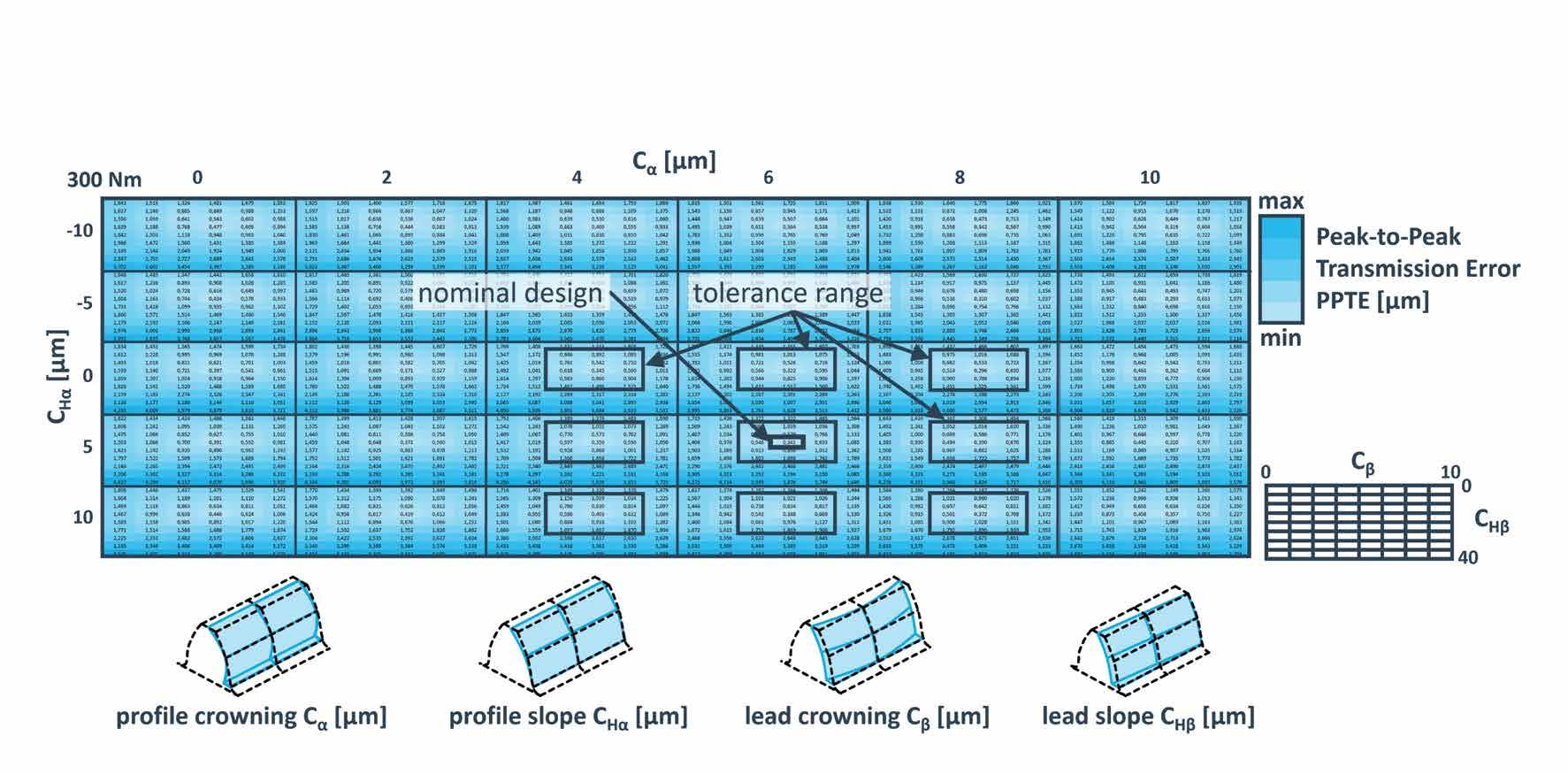
The minimum and maximum transmission error are determined from the tolerance range results and the standard deviation is calculated as a measure for the robustness of the design.
The example in figure 4 shows that the design of the nominal flank modification leads to very little transmission error at 300 Nm torque. However, when the manufacturing tolerances are considered most of the results show significantly higher transmission
deviation, even though the tolerances of the four input parameters are symmetrical to the nominal design. At 100 Nm torque the transmission error of the nominal design is significantly higher and much closer to the mean value for all results. These effects cannot be predicted without detailed analysis of the tolerance. Significantly higher safety factors must also be used in these cases, which makes the design larger, heavier, and more expensive.
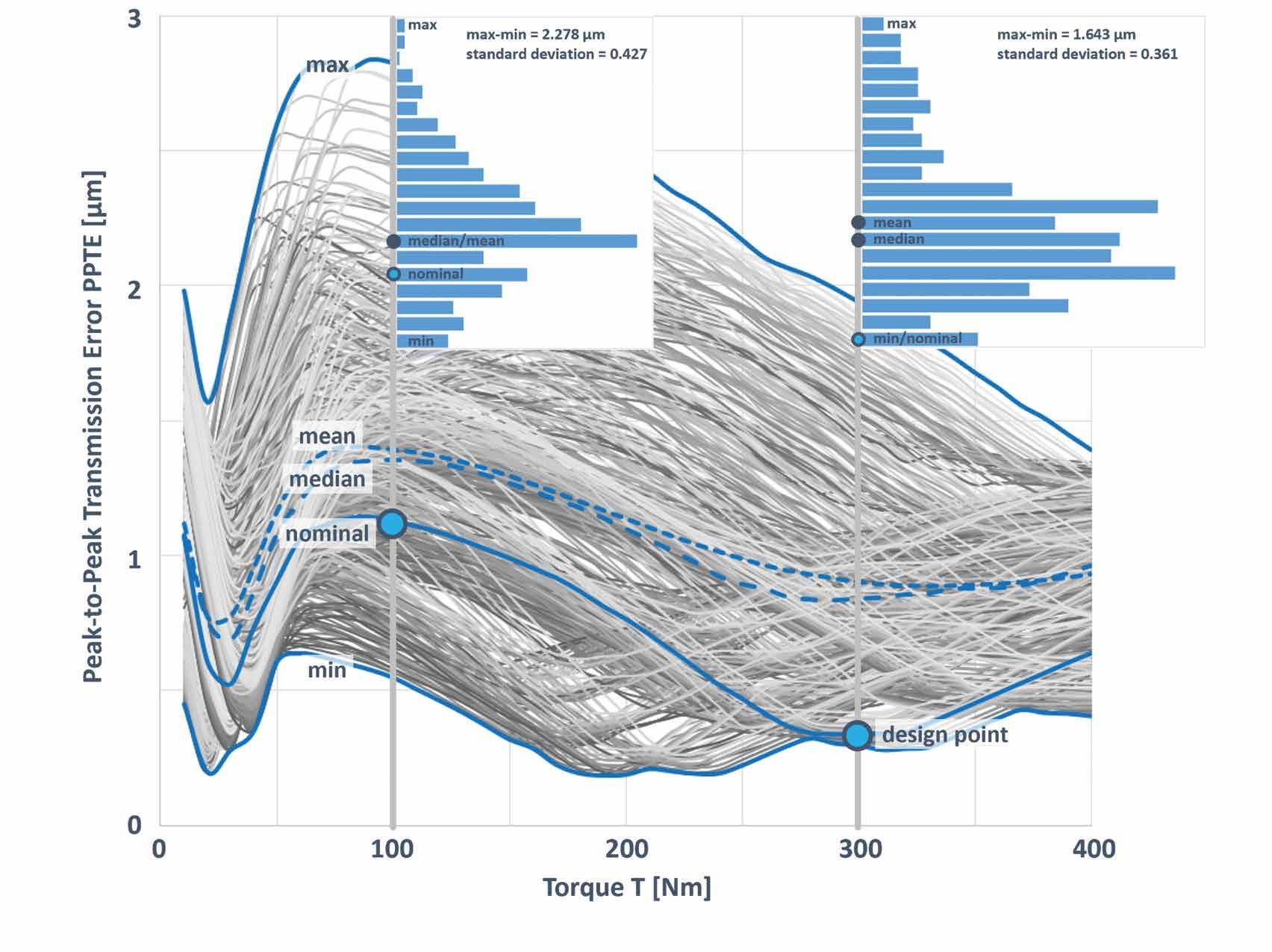
The FVA-Workbench can be used for simple, fast, and detailed calculation of complex transmission systems. All relevant details of the system in which the stiffness and behavior could potentially have an influence on the gear mesh are considered. The contact pattern can be optimized with targeted flank modifications, resulting in reduced stresses, longer service life, and low vibration –in other words, excellent NVH performance.
Flank modifications can nominally create an outstanding design under load. However, if the influence of manufacturing tolerances is not considered, there is a significant risk of producing inferior gearboxes. These may have to be reworked or rejected as scrap, which can lead to increased production costs, customer dissatisfaction, and reduced competitiveness.
With the FVA-Workbench the design process can largely be automated, allowing the user to focus on the important task of evaluating the results. This makes it possible to develop a robust gearbox in a short time and minimize the risk of problems during production. This not only saves time, but also lowers costs and material usage, thus lowering the CO2 footprint of the gearbox.
Founded in 2010, FVA GmbH actively collaborates with top-tier German research institutions and leading companies in the drive technology industry to facilitate the seamless integration of FVA’s research findings into industrial practice. The culmination of this research is embodied in our proprietary calculation software, the FVA-Workbench. This software is designed for the comprehensive modeling and calculation of drive components and systems, with applications ranging across diverse industries including automotive, aerospace, marine propulsion, wind power, and industrial facilities. In addition to software, FVA GmbH offers services for companies looking to benefit from our knowledge. This includes creating customized gear models, performing intricate calculations, and specialized programming. With expertise in mechanical engineering and software development, FVA GmbH’s experienced team collaborates closely with companies to provide expert support. FVA GmbH also boasts an extensive knowledge pool in the field of drive technology and a network that
includes both research institutes and industrial enterprises. This depth of knowledge is integrated into industrial practice through FVA GmbH’s diverse range of conferences and seminars. FVA GmbH has further expanded its focus with the establishment of its interop4X branch, specializing in providing solutions in the fields of industrial digitization and automation. With a specific emphasis on implementing interoperability and guiding transformation projects, this enables companies to achieve the full potential of their manufacturing processes.
For more information, please visit: www.fva-service.de.
References
1. FVA-Workbench 9.0 "Module Descriptions," 2024, available online at:
2. https://www.fva-service.de/en/software/features/
3. T. Placzek, "Load distribution and flank correction in spur and helical gear stages", Technical University of Munich Institute of Machine Elements (FZG), Munich, 1988 D. Mandt and H. Geiser, "Excitation behavior with flank modifications", FVA 338 I+II booklet 634, Frankfurt, 2001
4. H. Sigg, "Profile and Longitudinal Corrections on Involute Gears", presented at the SemiAnnual Meeting of the AGMA (American Gear Manufacturers Association) 109.16, Chicago, October 1965
Authors

Dipl.-Ing. Dennis Tazir Gear Specialist FVA GmbH

M.Sc. Benjamin Abert Head of Consulting and Service FVA GmbH

Over the last few years, NTN Europe has made significant investments, with more to follow, in order to modernise its Italian production site based near Turin. The work already carried out has enabled us to align the manufacturing processes and adopt the same quality standards as those applied by NTN in Japan. By adopting the architecture of the bearings with the NTN W33 design, the leader in precision mechanics now applies the NTN brand to the vast majority of its production and thus benefit from its recognition in the global market while optimising the performance of its parts.
Since 2017, the Italian production site, which specialises in the manufacture of spherical roller bearings, has seen continuous improvements, thanks in particular to the support of the parent company located in Japan. A delegation of three people supported the adaptation of the manufacturing
processes and the training of the teams in order to bring about an improvement in production quality at the Italian production site, in line with the high standards of Japan. As a result of this work, the SNR brand was changed to NTN.

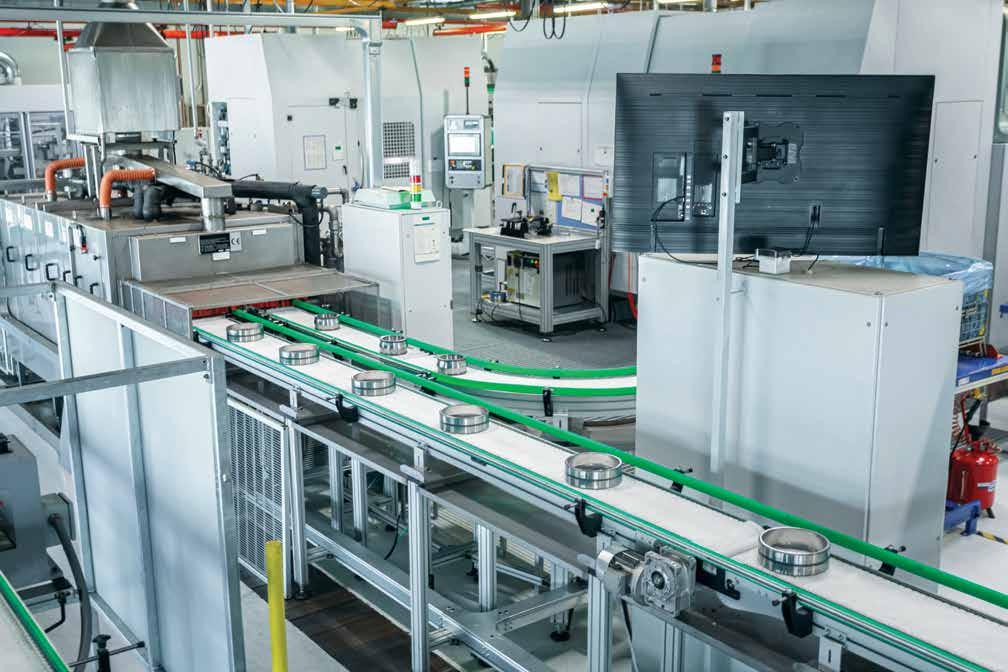

"Indeed, in order to market a product (previously SNR) under the NTN brand, its design must be consistent with that of Japan. Thanks to the substantial investments made, both in the production tool and in the training of the teams, we are pleased to have reached the required production standards: the NTN W33 premium design is now in force at the Italian production site. In practical terms, this means that we are now applying the NTN brand on the products we manufacture in Italy," explains Pierre Hingrez, Product Marketing Manager.
In a competitive market, the NTN W33 premium
design products offer clear competitive advantages over the former spherical roller bearings design. The 20% faster speed and 24% greater load capacity result in a doubling in the service life. Compared to the premium designs of its main competitors, the NTN W33 premium design has been considerably extended across the main series and symbols of the market and has on average the highest load capacities, a key factor in spherical roller bearings. This performance reflects both the quality of the materials used and also the bearing design. Particular attention has been paid to the cage, which remains perfectly guided and centred on the rollers at all times.


The Italian spherical roller bearing production site is now focused on supplying the world, excluding the Asian market dedicated to local Japanese plants. With this rebranding, NTN Europe is able to look to new markets and has consolidated its presence in existing ones.
Pierre Hingrez, Product Marketing Manager of
NTN
By thus eliminating the guide ring, the bearing offers many advantages:
+ Reduced friction because fewer components are in contact,
+ More free volume inside the bearing for improved lubrication,
+ More space available to maximise the size of rollers, which can thus bear greater loads.
Applications for spherical roller bearings are very demanding in terms of pollution, shock, combined axial and radial loads, temperature, misalignment, etc. Typical applications include mining, quarrying and cement works, industrial transmissions, the steel industry and cardboard factories.
In addition to these technical characteristics, the changeover to the globally recognised NTN brand has enabled the Italian production site to benefit from a solid reputation.
"The Italian spherical roller bearing production site is now focused on supplying the world, excluding the Asian market dedicated to local Japanese plants. With this rebranding, NTN Europe is able to look to new markets and has consolidated its presence in existing ones.” says Pierre Hingrez.
For more information, visit the NTN website.
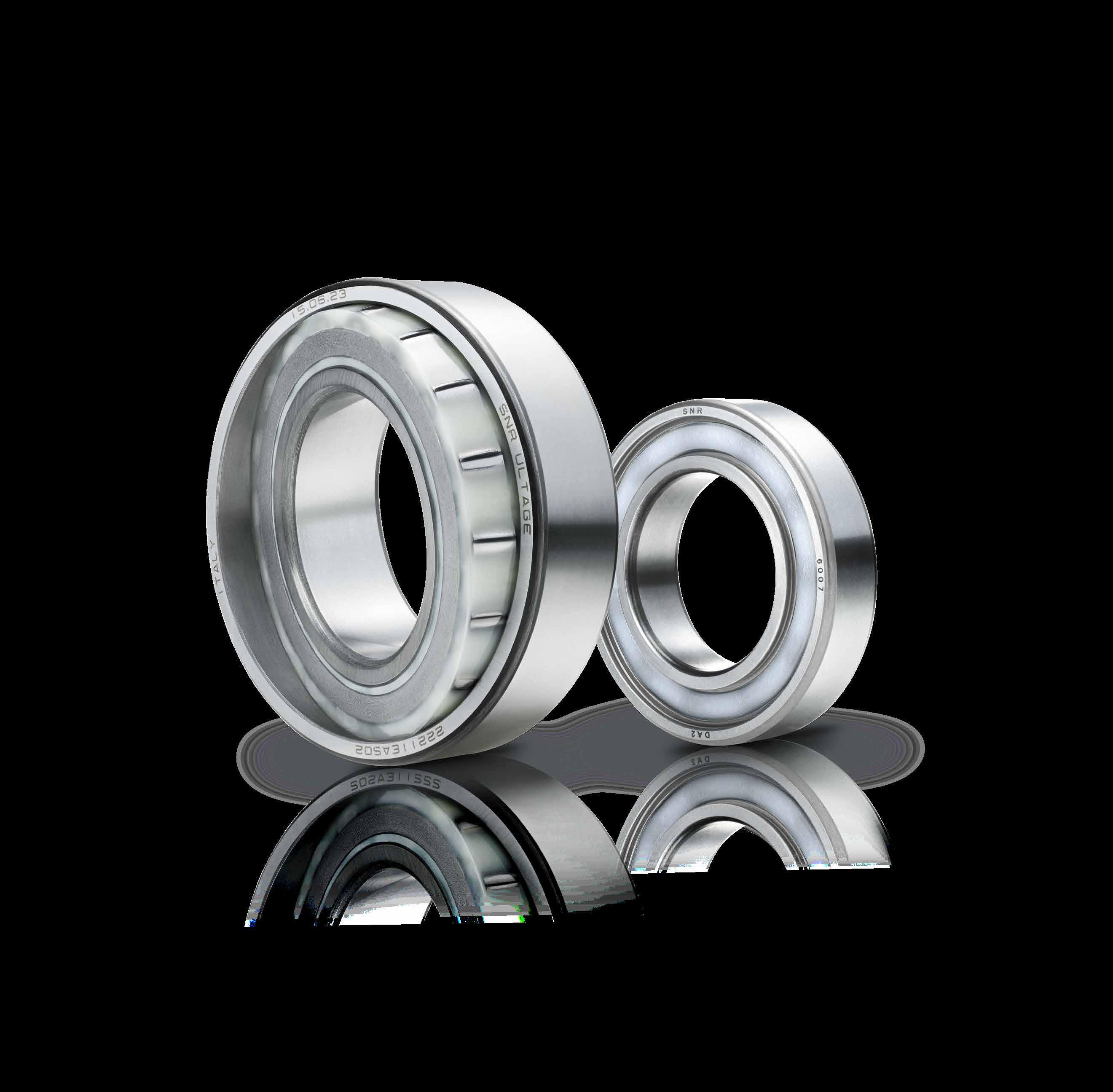
Make the world move forward*
LUBSOLIDTM is the outcome of our unparalleled proficiency in lubrication development. Through an extensive battery of tests conducted on bearings in the most stringent conditions, this French technology represents the most effective method to combat the causes of premature bearing failure. The solid lubricant solution is highly recommended for numerous industry. It is compatible with most articulated bearings and ensures safety and longevity.
*At NTN, efficiency hinges on a sustainable product life cycle

In the dynamic industrial sector, the adaptability and efficiency of equipment are essential to optimize production processes. In this context, Ydins belts with custom made and interchangeable cleats stand out for their multifunctionality and versatility, offering technological solutions specially designed for the packaging industry.

Multifunctionality and versatility of Ydins belts
Ydins belts have been designed to suit various industrial applications. Its novelty in the design of interchangeable custom cleats allows the same belt to be used in different processes by simply changing the cleats, providing unprecedented flexibility in variable production environments.
Advantages of interchangeable cleats in production processes
The implementation of interchangeable cleats on Ydins belts brings multiple benefits to industrial processes:
1. Convenience and ease of cleat replacement: The exchange system is designed to facilitate quick and easy cleat changes, reducing downtime and improving operational efficiency.
2. Cost reduction: By allowing a single belt to adapt to multiple applications by changing cleats, the need to purchase and store different types of belts is reduced.
3. Longer belt life: The ability to replace only worn cleats instead of the entire belt helps to extend the life of the equipment, promoting sustainability and resource savings.

The packaging industry particularly benefits from Ydins belts with interchangeable cleats, as they allow you to quickly adapt to different formats and sizes of products without the need to change the entire belt. This flexibility is crucial in production lines that handle a wide variety of products, improving efficiency and reducing changeover times.
In short, Ydins belts with interchangeable cleats represent a significant innovation in the industrial field, offering an adaptable, efficient and easy-tomaintain solution. This technology not only optimizes
production processes, but also strengthens the competitiveness of companies by allowing quick and precise adjustments according to operational needs. This solution is an example of the wide range of possibilities that the Ydins brand offers to develop custom-made results, adapted to each specific application or purpose. Thanks to its technical capacity and commitment to customization, Ydins is a strategic ally for any industry looking for efficiency, reliability and solutions truly adapted to its specific challenges.
For more information about Ydins, www.ydins.es | info@ydins.es


Explore the next level of automatic lubrication: simalube IMPULSE connect



The «simatec World of Maintenance» app is the overarching digital simatec platform: simatec products can be controlled by the app, taking simatec another step into the
Features
Monitoring of lubrication points
Creation of electronic lubrication schedules in Lubechart (available in the App)
Digital ordering process
Calculation Pro: Calculation programme for the correct setting of your lubricators. Available in the app «simatec World of Maintenance» only Download the



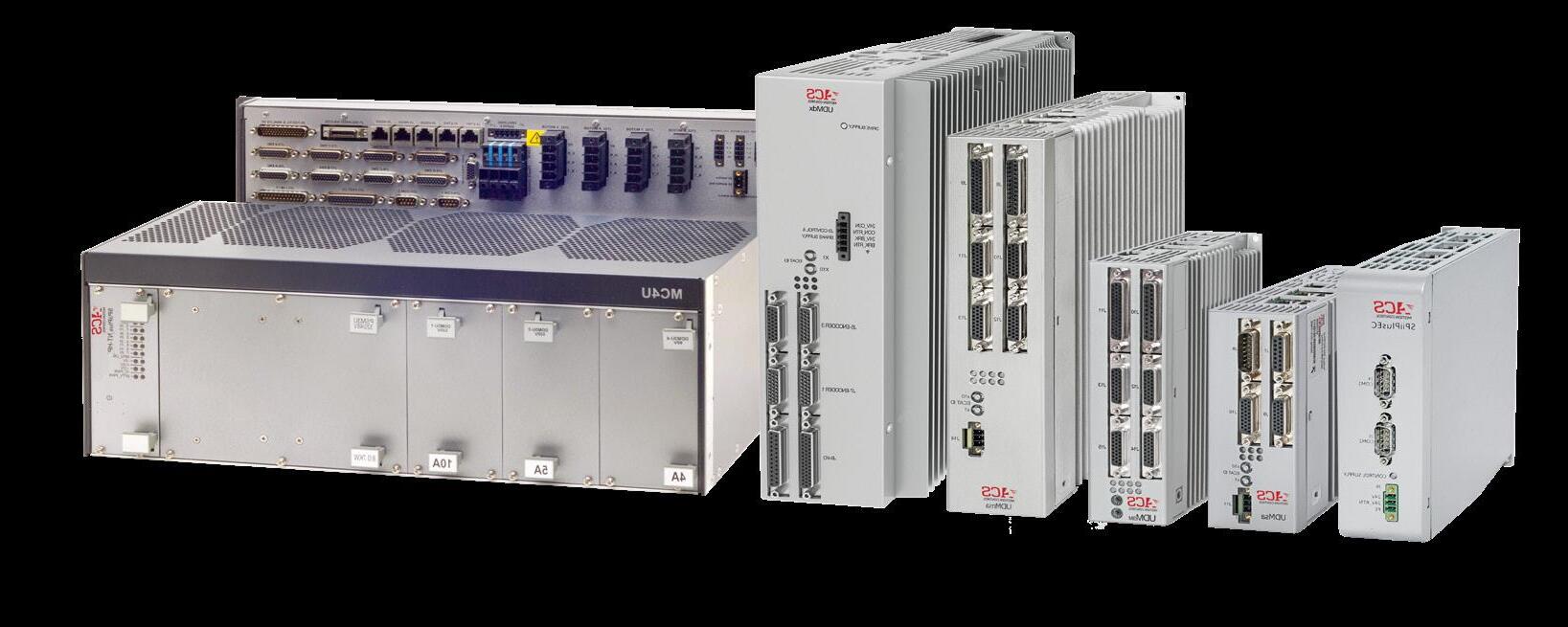

Nippon Thompson and VarioDrive have teamed up to enhance their offerings by combining Nippon Thompson’s advanced motion technology with VarioDrive’s innovative drive systems. This collaboration aims to deliver high-performance, reliable solutions that meet the growing demand for precision and efficiency in industries like automation, robotics, medical and semiconductor markets across Europe.
’s positioning tables offer a tailor made solution to any application imaginable, together with their trusted Linear Motion Rolling Guide technology, now can offer the support with VarioDrive’s who will guide you through the complex landscape of solutions and components with motion control systems.

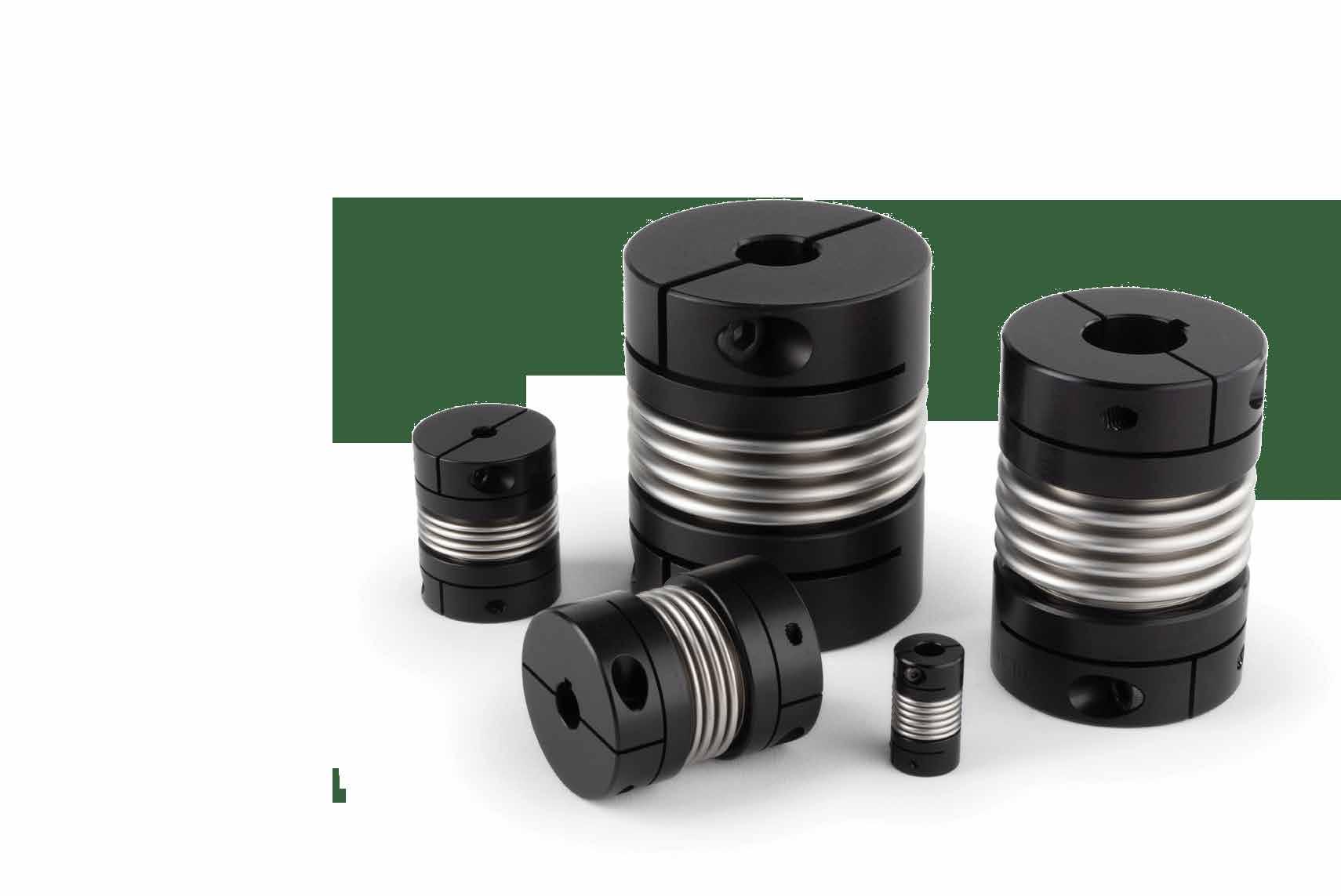
Ruland bellows couplings are ideal for precision motion in robotic applications due to their zerobacklash design, high torque and torsional stiffness, and various styles that ensure accurate movement and smooth operation. They are commonly used in industrial, medical, and autonomous robotic systems requiring high speed and accuracy.
Ruland bellows couplings are designed for hightorque and zero-backlash applications, which are essential for robots requiring precision motion control. These couplings are lightweight, have low inertia, and can accommodate all forms of misalignment, making them highly versatile for different robotic applications.
Designers benefit from using Ruland bellows couplings because they have reduced vibrations at speeds up to 10,000 rpm due to a balanced design. They are also available in standard lengths for increased torsional stiffness and extended lengths for increased misalignment capabilities. These options allow designers to use the bellows coupling that best fits their application.
Ruland bellows couplings are available in clampstyle designs, with bore sizes ranging from 3 mm to 45 mm. Hubs are manufactured from meticulously
selected 2024 T-351 aluminium bar stock for high strength and low inertia. Bellows are made from stainless steel, giving the coupling flexibility under torsional loads. Each coupling undergoes a proprietary assembly process to ensure it does not introduce misalignment, causing high bearing loads into the system.
Ruland carefully manufactures bellows couplings in its ISO 9001:2015 certified advanced manufacturing facility in Marlborough, Massachusetts, using strict controls and proprietary processes. They comply with RoHS3, REACH, and Conflict Minerals, ensuring they meet global environmental sustainability and safety standards.
Summary: Why Ruland bellows couplings?
+ Ideal for precise motion in robotic systems, offering high torque and torsional stiffness
+ Reduced vibration at speeds up to 10,000 rpm due to a balanced design
+ Long lengths for increased misalignment and standard lengths for maximum torsional stiffness
+ Carefully made in Ruland’s Marlborough, Massachusetts advanced manufacturing facility
+ Available for immediate delivery
+ RoHS3, REACH, and Conflict Minerals compliant
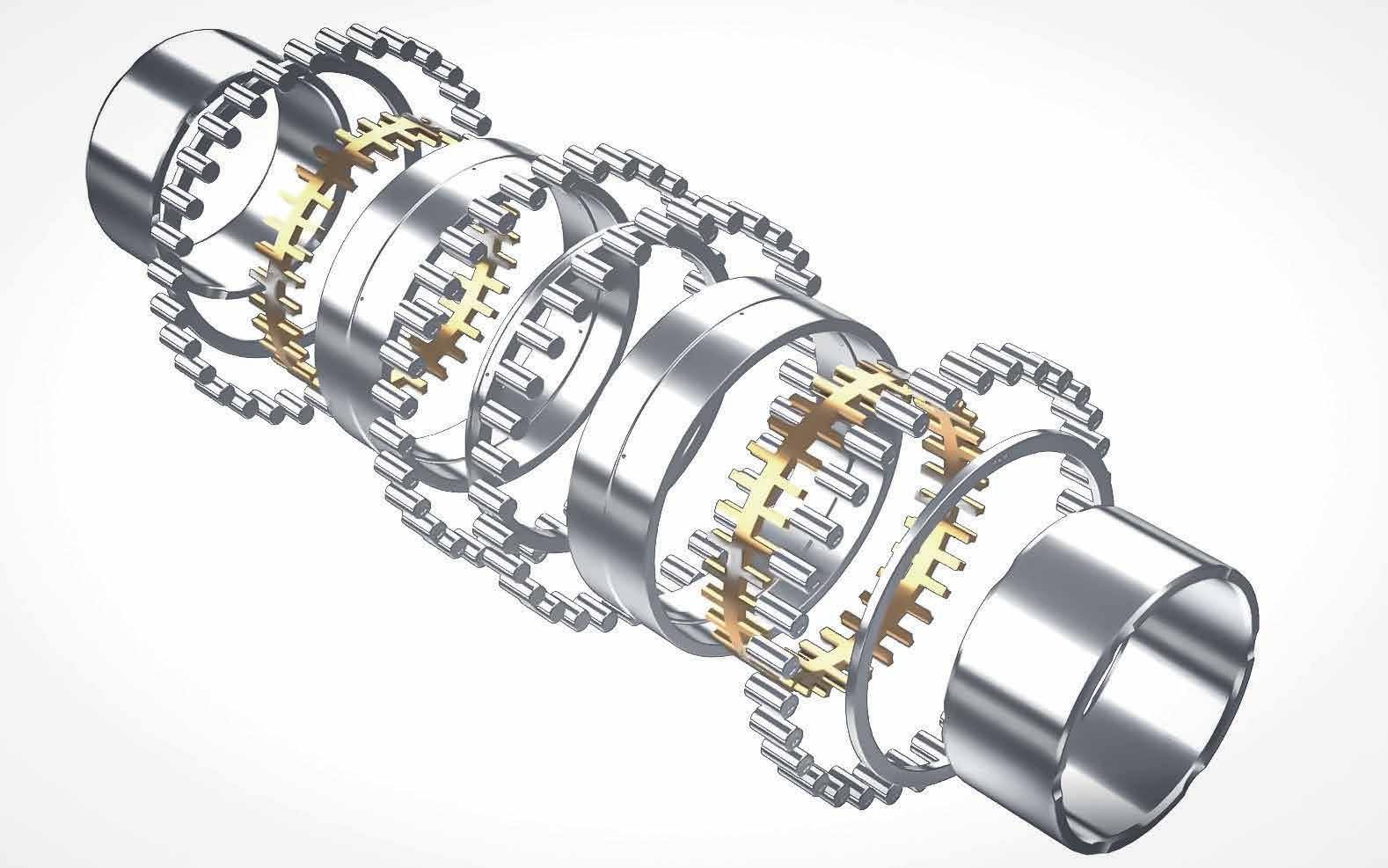
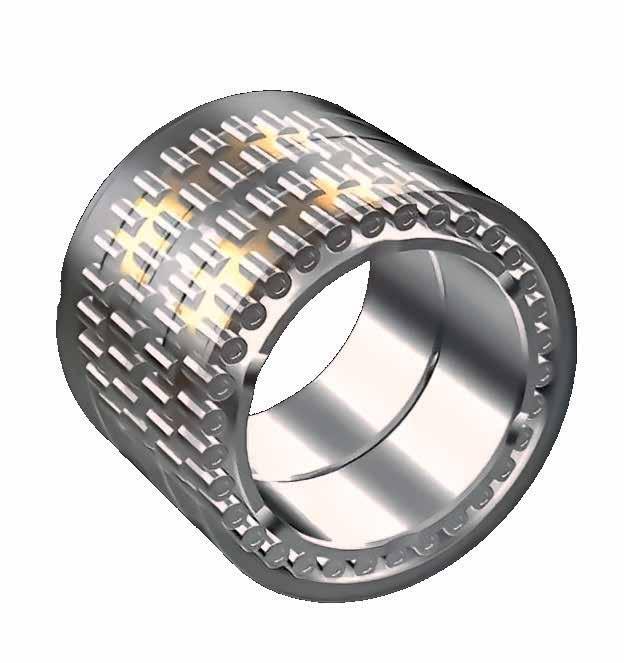


When strength, reliability, and endurance are nonnegotiable, D.I.D Ultimate Power Chains rise to the challenge.
As part of the world-renowned D.I.D EUROPE portfolio,these chains are engineered to deliver superior fatigue strength, impact resistance, and transmission efficiency across a wide range of industrial applications.
As the European hub of DAIDO KOGYO, D.I.D. EUROPE ensures the seamless availability and support of D.I.D products across Europe, maintaining the exceptional quality that the brand is renowned for.
When strength, reliability, and endurance are nonnegotiable, D.I.D Ultimate Power Chains rise to the challenge. As part of the world-renowned D.I.D EUROPE portfolio, these chains are engineered to deliver superior fatigue strength, impact resistance, and transmission efficiency across a wide range of industrial applications.
The D.I.D HI-PWR-S roller chains are designed to provide enhanced fatigue strength and impact resistance, all without altering the standard dimensions in the pin length direction. These chains maintain full compatibility with existing systems that adhere to ANSI/JIS Standard Roller Chains, while delivering upgraded performance in demanding environments.
The HI-PWR-S chains feature Oval Figured Wider Waist Link Plates and Thru Hardened Pins, offering exceptional resilience against wear and fatigue.
Available in sizes 80 through 240 and with up to 3 strands in both riveted and cottered styles, these chains are built for versatility and extreme reliability.
Some of the key features include:
+ Enlarged plates for greater durability against dynamic and impact loads;
+ Higher machining and assembling accuracy for smoother, more efficient operation;
+ High transmission efficiency, making them ideal for applications across a wide range of speeds, from low to high;
+ Approximately 30% higher maximum kilowatt rating compared to standard roller chains in the medium to low-speed range.
Thanks to their robust structure, the HI-PWR-S chains excel in environments with large shock loads, frequent start/stops, and high-speed operations. These include civil engineering machinery such as skid steers, trenchers, trucks, cranes, agitating trucks, forklifts, and drive units for conveyors, elevators, and stackers.


HK type roller chains conform to the H type of ANSI standards, and their inner and outer link plate thicknesses are equivalent to those of the next larger size chain. As a result, HK type roller chains offer

a significant improvement in performance, with a tensile strength approximately 20% higher and a maximum allowable load about 15% greater than that of standard roller chains. While their weight has also increased, these chains are ideal for heavy-duty applications operating at low speeds.
HK type roller chains are optimal for applications requiring higher strength, where the use of larger and heavier chains would be impractical. A prime example of such applications is asphalt finishers, where the need for enhanced durability and performance under demanding conditions is critical.
For applications that demand even more robust performance, D.I.D HI-PWR-SHK roller chains feature thicker link plates than the HI-PWR-S chains. Specifically designed to resist the weakening effects of installation and operational fatigue, the HI-PWR-SHK chains offer enhanced tolerance to large shock loads. These chains provide 25% higher tensile strength, and 50% higher allowable load capacity compared to standard roller chains, making them the ideal solution for extreme applications.
These high-strength chains are the go-to choice for heavy-duty, low-speed transmission needs, such as construction machinery, pipe benders, and multi-level parking machines.
For inquiries: info@did-eu.it or a.mebrahtu@did-eu.it
DID EUROPE S.R.L
Via del Fonditore 16, 40138, Bologna www.dideurope.com
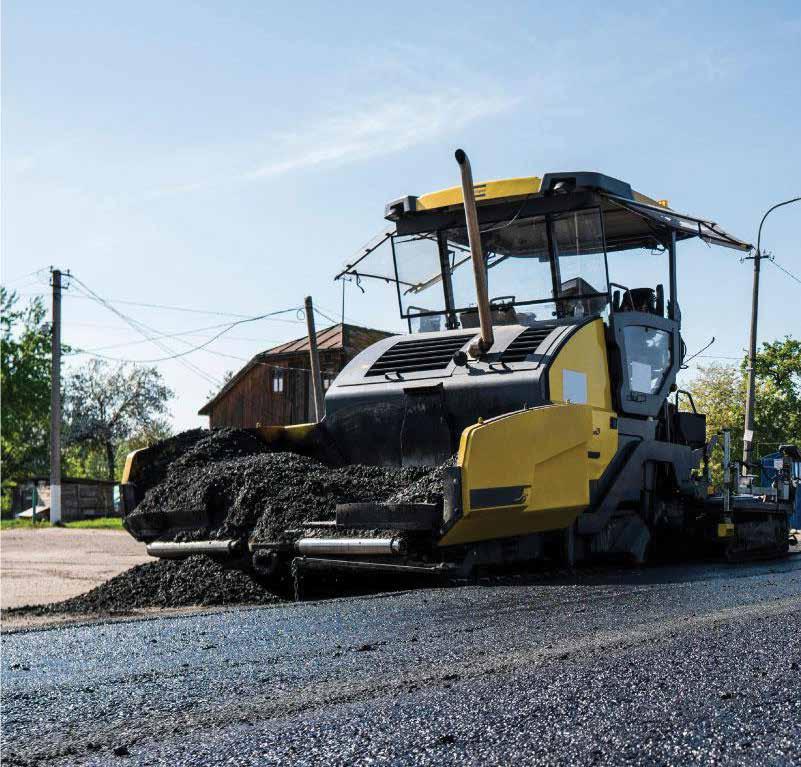

more detailed information on


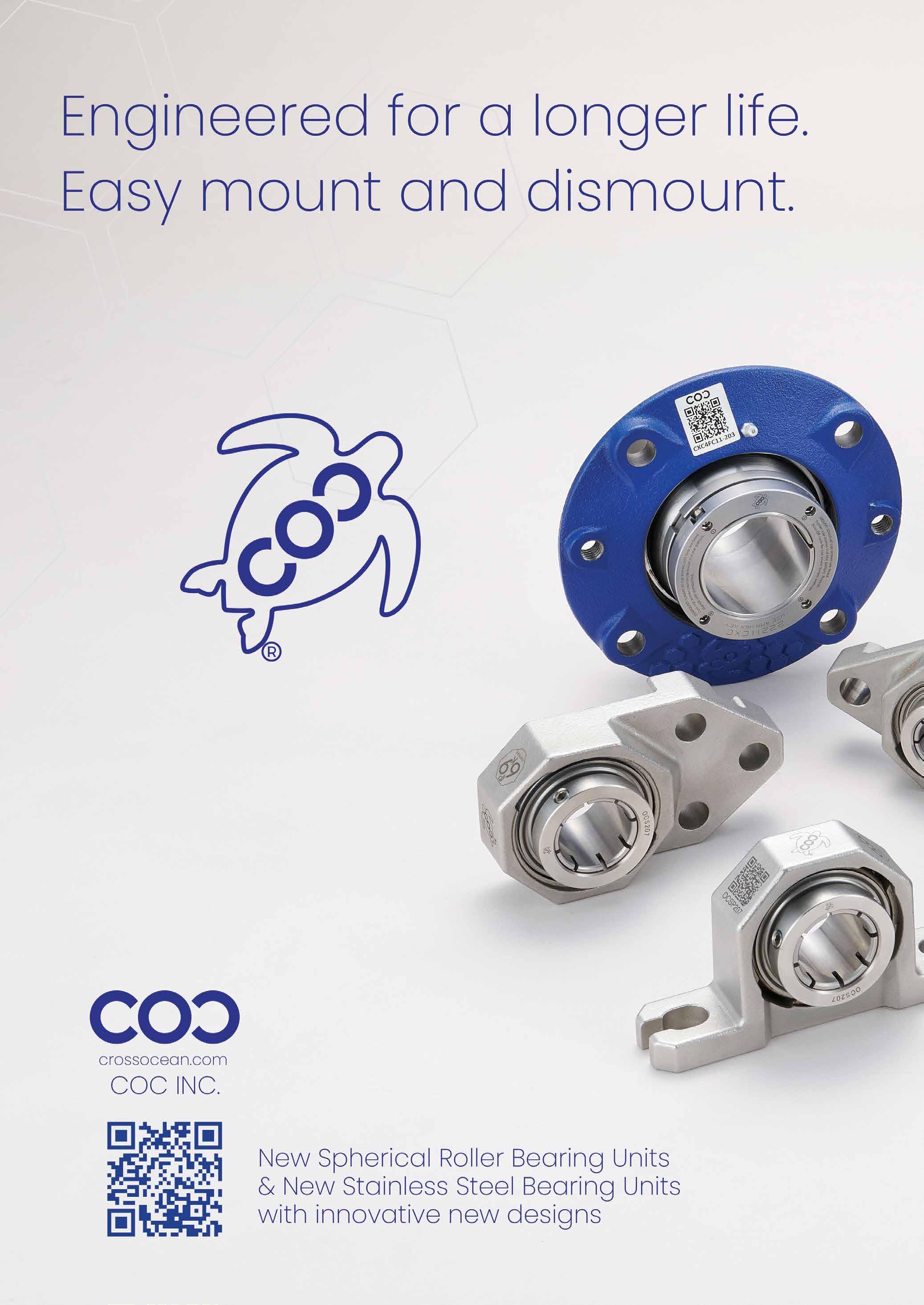

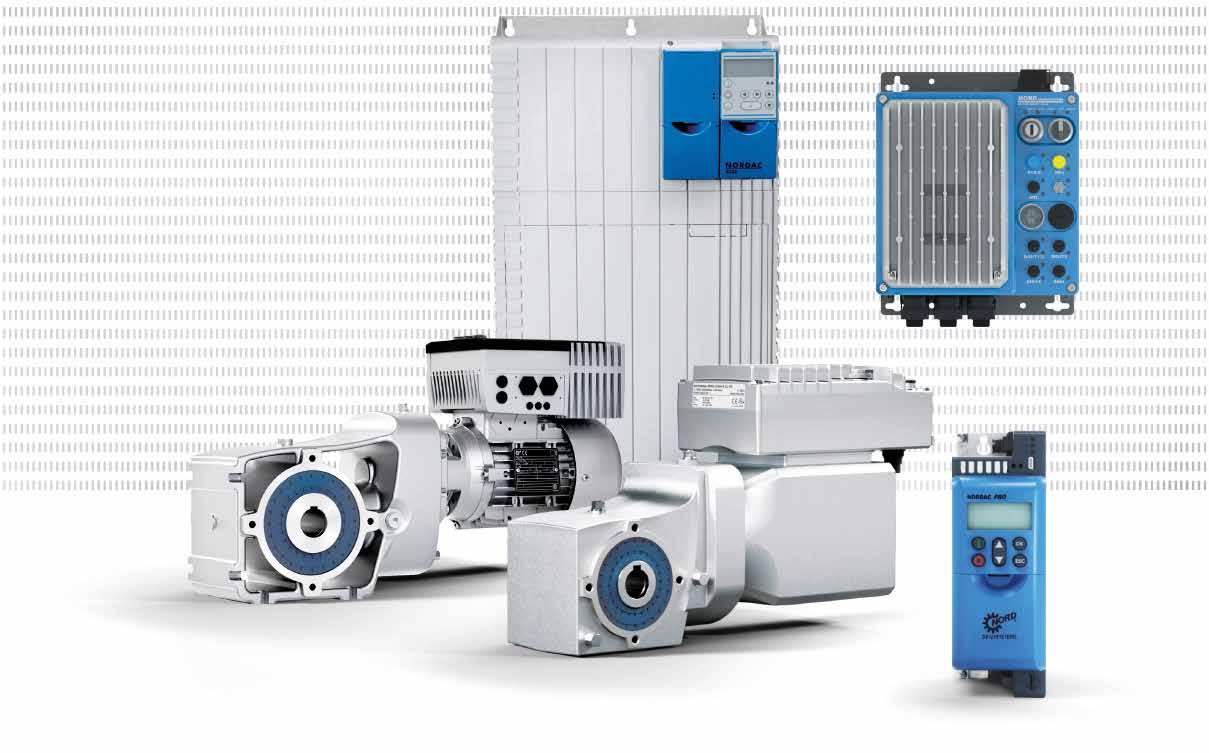
From motor to inverter: NORD supplies individual drive solutions from a single source
Drive electronics from NORD DRIVESYSTEMS is the key to any drive application. With its NORDAC frequency inverters, the system supplier demonstrates its solution expertise also in the fields, where movements must be intelligently controlled. These can be found in various applications, which also have an influence on daily life.

One example is the safe and efficient cutting of food products such as bread, meat or cheese. In every cutting machine used in commerce, crafts and industry, the aim is to precisely control the contact pressure of the relevant food product in the machine. This is made possible by the PLC, integrated in all NORDAC frequency inverters from NORD. It allows to freely programme drive-based control functions. This ensures consistent cutting quality.
Intelligent control functions master industryspecific drive applications
When it comes to bottling liquid food products, speed is an essential factor. NORD frequency inverters ideally meet the great demands on precise speed control. They thus ensure an optimally balanced production process. Furthermore, for example, the NORDAC PRO control cabinet inverter can be integrated via Ethernet. It thereby allows for the remote maintenance of the system. Online tools can thus be used to check components for errors and to evaluate any recorded data of the frequency inverter. This way, NORD ensures high system reliability.
Drive solutions from NORD also take effect when it comes to precise positioning tasks. Here, the company offers its integrated POSICON module, which, for
example, is contained in frequency inverters such as NORDAC PRO. It allows automatic positioning control for different applications such as travelling theatre sceneries for trouble-free theatre performances.
Extensive modular range of products meets industry expertise
Solution provider NORD DRIVESYSTEMS develops and manufacturesapplication-specific drive systems from a single source. For that, the company is using its industry expertise with which it supports customers in about 100 industries. The extensive range of modular products consisting of gear units, motors and electronic drive technology forms the basis for the implementation of solutions. The components can be assembled in a modular and optimally matched manner to create customised systems.
The field of drive technology is the newest one of NORD DRIVESYSTEMS, which will celebrate its 60th anniversary next year. Since the beginning of the 1980s, the company has been developing and manufacturing the NORD portfolio for electronic drive control at its site in Northern German Aurich. This comprises the frequency inverters for control cabinet installation, decentralised frequency inverters and motor starters.


+ Full-Process Automation of Bearing Quality Inspection Loading ->Washing and drying -> AOI Inspection -> Oiling ->Packaging Optional features available upon request: ECT crack and hardness testing, dimensional measurement and grouping, etc.
In an era where precision, performance, and reliability are non-negotiable, the role of visual inspection in bearing manufacturing has never been more critical. As the global push toward smart manufacturing accelerates, K2TECH, a leading innovator in AI-driven visual inspection solutions is at the forefront of this transformation.
Founded in 2009 in Hangzhou, K2TECH has spent over a decade mastering the intersection of artificial intelligence, machine vision, and industrial automation. Today, its AI vision inspection systems are setting new standards in quality assurance, especially in the demanding world of bearing production.


Bearings are the silent workhorses behind countless applications—from automotive drivetrains and industrial motors to rail systems and wind turbines. Their reliability is directly tied to precision manufacturing and defectfree surfaces. Even the smallest imperfection can lead to failure in the field.
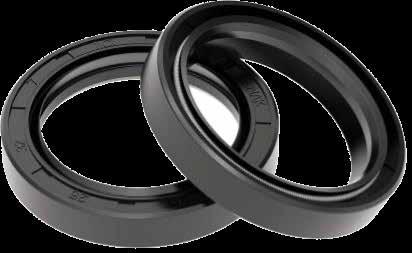
+ Sealing
K2TECH’s AI-powered inspection systems target critical bearing components such as rollers (TRB, CRB, SRB), seals, wheel hubs, and fully assembled bearings. Utilizing high-precision industrial cameras and a proprietary AI platform, these systems can identify microscopic surface defects, including rust, scratches, dents, and abrasions, with an impressive defect recognition accuracy of 0.1 mm and zero miss rate.
The company’s full-process automation line takes quality control to the next level. It integrates all inspection stages into a seamless workflow: loading, washing, drying, automatic optical inspection (AOI), oiling, and packaging. Optional modules such as eddy current crack testing, hardness checks, and dimensional measurements further elevate the precision and customizability of the system. Notably, K2TECH’s inspection lines can process up to 14,000 rollers per hour, making them ideal for high-volume production environments. These
systems have already demonstrated tangible benefits at leading global manufacturers improving overall equipment effectiveness (OEE) by 8%, reducing labor requirements by four full-time equivalents per line, and cutting appearance-related customer complaints by a staggering 90%.

At the core of K2TECH’s solution lies its AI inspection platform. Built on GPU-based computing, the platform supports high-speed parallel processing and rapid image analysis, with single image processing times as low as 0.2 milliseconds. New defect types can be trained in under 10 minutes, enabling manufacturers to adapt quickly to evolving production needs without extensive downtime.

Moreover, all inspection data is stored locally and backed by built-in statistical tools, allowing for advanced quality tracking, defect classification, and predictive insights. This data-driven approach not only supports smarter decision-making but also builds a foundation for future integration into broader smart factory ecosystems.
K2TECH’s reputation for excellence has earned the trust of top-tier bearing producers such as SKF, NSK, NTN, TIMKEN, and SCHAEFFLER. With exports spanning over a dozen countries across North America, Europe, Asia, and the Middle East, the company has become a global reference point in AI visual inspection for precision industries.
What sets K2TECH apart is its relentless focus on deep domain expertise, particularly in the bearing sector. While expanding into fields such as automotive components, new energy, and consumer goods, the company remains committed to advancing bearing inspection as a niche specialty.




As industrial manufacturers face increasing pressure to boost quality while reducing costs and improving traceability, AI-driven solutions like those from K2TECH are no longer a luxury, they are a necessity. By combining cutting-edge technology with a deep understanding of real-world manufacturing challenges, K2TECH continues to empower the world’s leading manufacturers to achieve more with less.
In the world of bearings, precision is everything. With K2TECH, precision is automated and smarter than ever.
Contact
QOGORI EUROPE LTD
Sean : +44 7410097272 (Tel/Whatsapp)
Hangzhou Qogori Tech Co.,Ltd
Chris : +86-15372028375 (Tel/Whatsapp)
Website : www.Qogori.com


+ New heating process saves 2.4 million kilowatt hours of natural gas and 400 tons of CO2
+ New heat pump with 622 kilowatt heating capacity as central component
+ Flender CEO Andreas Evertz: "We have a significant responsibility to society and our climate to make our production as sustainable as possible."

The scene in the Flender hardening shop is spectacular: flames several meters high leap out of a cooling basin and light up the dark walls of the hall. Just seconds earlier, an employee used a crane to lift several red-hot gears from a hardening furnace into the basin. The gearbox components, heated to 840 degrees Celsius, are plunged into an oil bath. It is obvious that gearbox specialist Flender needs a lot of energy to operate its 26 hardening furnaces at the Bocholt site. Now, part of this energy is fed back into the process, and heats the site —another step on Flender’s journey towards more sustainable production.
Flender requires around 20 million kilowatt hours of electricity annually to harden 15,000 tons of geared component to ensure their surface quality. This is a significant amount of energy, and yet the gear manufacturer is by no means one of the energyintensive companies such as steel mills or foundries. Only through the hardening process does the surface of the gears achieve the quality needed to ensure that gearboxes in applications, like wind turbines, run reliably and efficiently for decades. Energy to drive the energy transition, so to speak.
For several years, Flender’s building and facility management team has been exploring ways to reuse this energy. For a long time, the technology required was lacking. "With the launch of the new heat pump, we can transfer the waste heat generated when cooling the hardening furnaces to the site’s heating system. This is a unique process in this setup and scale," explains Project Manager Robert Iding. The cooling water, at 32 degrees Celsius, heats the heating circuit water to the same temperature through a heat exchanger. The heat pump then heats this water to the 60 degrees Celsius required to heat the buildings. The process is comparable to that used in typical homes. The significant difference: with 622 kilowatts of thermal capacity, the heat pump installed at Flender is roughly 75 times more powerful than the standard heat pump in a typical single-family home. The water is then sent from the heating circuit back to the hardening shop. There it is reused at 22 degrees Celsius to cool the ovens and the cycle starts all anew.
The construction work took six months. In addition to the heat pump, new water pipes were laid from the hardening facility across the company site. The large heating distributor and part of the heating system were

also updated. "We examined the entire periphery of the heating system to modernize the system and make it as energy efficient as possible," says Iding.
The impact is substantial. Flender now heats most of its halls and buildings in Bocholt using energy from the hardening process rather than conventional gas heating, saving nearly 2.4 million kilowatt hours of natural gas annually and reducing CO2 emissions by 400 tons.
"As an industrial company, we have a large responsibility to society and our climate to make our

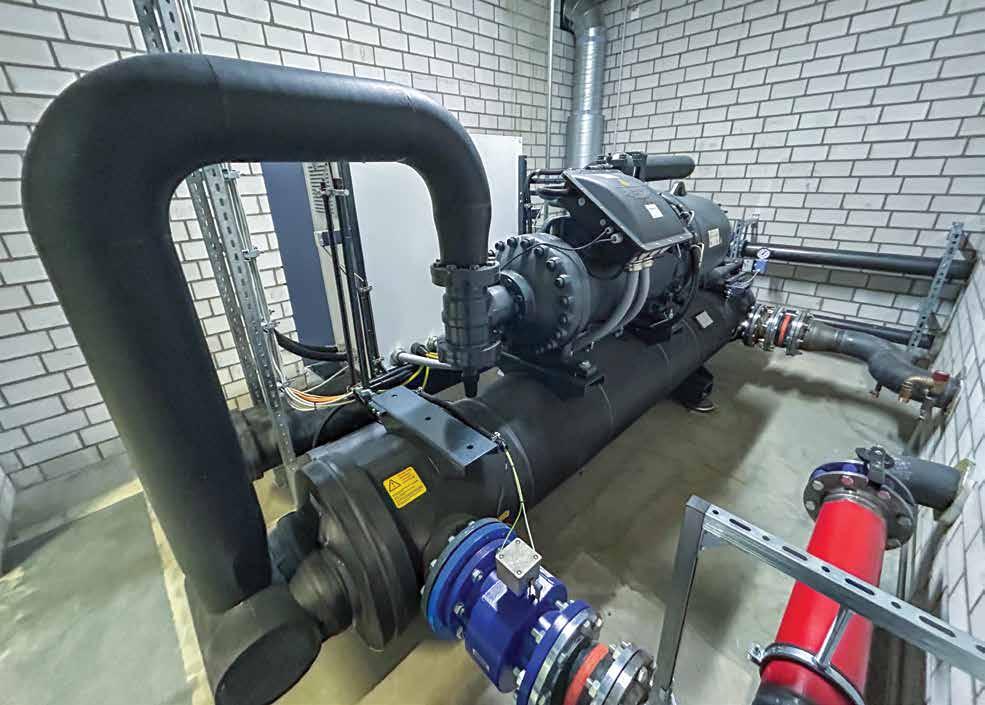
production as sustainable as possible. Those who have followed our activities in recent years know how committed we are to driving industrial transformation. Numerous projects have reduced our resource consumption and carbon footprint. This new heating method is another major milestone in reaching our self-imposed goals - a success everyone involved can be proud of," says Flender CEO Andreas Evertz. "The new heating system is a long-term investment that pays off. We are reducing our energy consumption and setting another positive example in the industry. With the reduced gas consumption, the project also makes perfect economic sense," says Kimberley ten Broeke, Head of Corporate Social Responsibility (CSR) at Flender, who coordinates all of the company's sustainability activities.

JTEKT Bearings (formerly Koyo Bearings) is a global manufacturer and supplier of highly engineered bearings for a large diversity of demanding industrial and automotive applications. For specific industrial applications, these products must be manually mounted and dismounted with the greatest possible care and dedication to avoid damage and/or malfunctioning in operation.
For the purpose of mounting and dismounting bearings, JTEKT is introducing a new series of tools in the following four categories:
JTEKT mechanical mounting sets provide a safe and precise method for quick mounting and dismounting of bearings, bushings, seal rings, cam wheels and pulleys with diametes of 10-60mm. The set is equiped with premium massive rings for extra long durability.


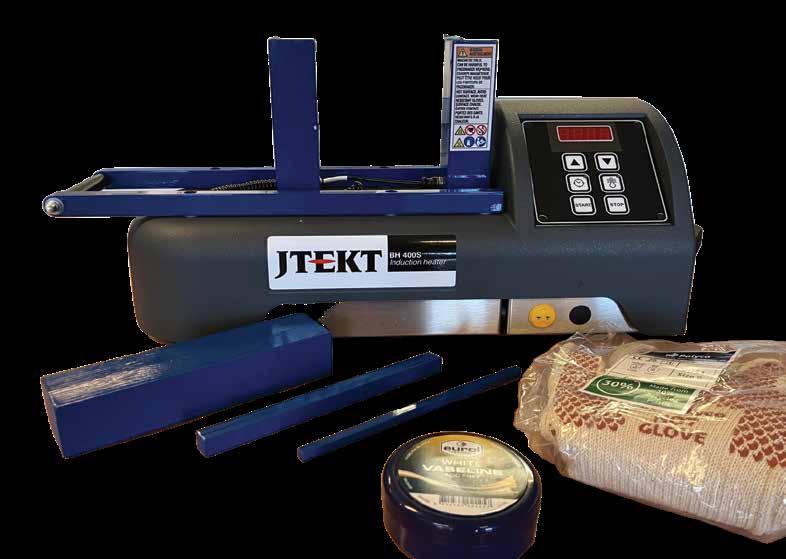
JTEKT induction heaters provide a fast and controlled heating method to help facilitate shrink-fit mounting of bearings and other shaft fitted compoments. Compared to traditional heating mehods like ovens, oil baths or blow torches, it provides a safe and environmentally friendly alternative.



JTEKT mechanical pullers provide an easy but safe way to romove a wide variety of parts from a shaft, like bearings, bushings, wheels, gears and pulleys.
JTEKT hydraulic pullers provide a controlled and safe way to romove a wide variety of parts from a shaft, in more demanding environments. Depending on the lay-out 2 or 3 lifting arms can be used to remove the parts properly.
More information
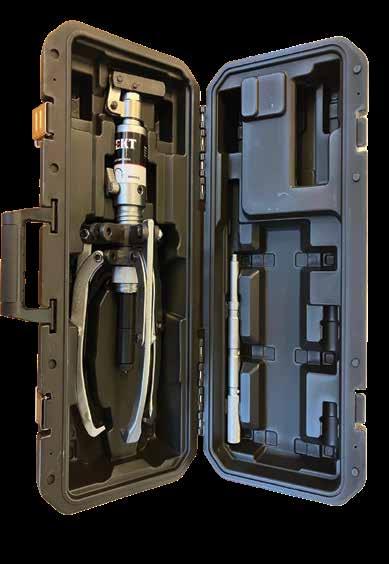

For more detailed information about the types and sizes of JTEKT mounting tools please refer to the related document: JTEKT Bearing Mounting & Removal Tools

General notification
Koyo Bearings has been officially rebranded to JTEKT Bearings as of April 1, 2022. Please be aware that this is only a change of brand. The company, its general structure, the products, production plants and services will remain the same. Our customers can rely on the continued good service and quality and top performance of our products in the future and our commitment to keep the same excellent business relationship with our valued partners, as in the past.



In Europe, the manufacturing market is expected to grow by 3.93% by 2028, reaching a whopping value of £2.83 trillion.

As the world continues to change and priorities shift, the European manufacturing industry is finding several ways to keep up with technologies, emerging trends, and eco-conscious strategies.
For example, by 2030, 60% of all manufacturing production will make use of sustainable practices, meaning that the sector is trying to play a significant part in preserving the well-being of the planet.
But what other innovations are driving this thriving industry forward? Welding Alloys, a leading expert in hardfacing for welding businesses, explores what exciting tech trends are gradually shaping the new manufacturing landscape.
Additive manufacturing, also known as 3D printing, is one of the most popular innovations embraced across the sector.
Mario Cordero, Group Innovation Director at Welding Alloys, said: “3D printing is becoming an increasingly common solution to speed up production processes at a more favourable and affordable cost.
“The beauty of this technology is that it allows businesses to create items layer by layer with computer-aided design (CAD) support. Through the help of this innovative tool, manufacturers can
assemble complex designs that would otherwise be challenging and expensive to produce with more manual, conventional methods.
“In this respect, 3D printing opens the door to customisations, too. Because every manufactured item is based on a digital blueprint, each product can be easily tweaked without the need for retooling. This is particularly useful for the healthcare and medical sectors, where splints, supports, and health devices can be customised to suit a specific patient’s diagnosis.
“That said, the versatility of 3D printing can be extended to a wide range of businesses in the manufacturing industry, including aerospace, automotive, and consumer goods.”
Robots and cobots are becoming a frequent sight in manufacturing industries in Europe and across the world. For example, in Germany alone, automotive companies are home to 1,500 robotic units for every 10,000 employees.
The benefit of robots is that they can take care of a large array of tedious, physically demanding tasks while maintaining accuracy, efficiency, and quality throughout. What’s more, they can help reduce wastage and breakages caused by inconsistent finishings or below-par quality products.
Nowadays, advanced industrial robots are equipped with sensors and artificial intelligence, meaning they can detect potential issues from the off and carry out a programmed motion with limited lag.
As for ‘cobots’, these collaborative machines are built to share workspaces with humans, to keep people safe and to alleviate the demands of their jobs. For example, in hazardous environments, risky processes are often delegated to cobots, which can, in turn, prevent serious and avoidable injuries.
The Industrial Internet of Things (IIoT) is an innovative, data-driven approach that allows businesses in the manufacturing sector to collect, monitor, and analyse production figures.
With real-time data, companies can make more informed decisions and swiftly improve operations.
What is truly clever about IIoT is that it also interconnects machines, devices, and appliances used in the manufacturing process. By communicating and sharing data, every machine reacts accordingly,

resulting in more efficiency, budget-friendly costs, and better-quality products.
IIoT can be widely used across the industry, benefitting pharmaceutical, chemical, electronics, and food and beverage manufacturing businesses.
Another piece of modern technology that is slowly taking the manufacturing sector to the next level is augmented reality (AR).
AR is already a prominent feature in the gaming and education industries, allowing users to interact with virtual items and increasing consumers’ engagement rates. By 2030, the AR gaming market is projected to be worth more than £22 billion.
The good news is that AR’s characteristics can also benefit the manufacturing world, as it can optimise the training and development of new and existing employees.
AR provides a safe, immersive platform where workers can learn and practice new skills without the worry of making costly or dangerous mistakes. So, for example, when aerospace engineers need to train for repairs to complex and sophisticated machinery, they can do so with confidence and muchneeded peace of mind.
As the manufacturing industry in Europe continues to evolve, more and more businesses are exploring new innovative trends to power their operations and increase efficiency, quality, and profits.
From 3D printing and robotics to augmented reality and IIoT, several tech tools are helping the manufacturing landscape improve for the better.


The Ultraprobe 15,000 uses ultrasound to analyze everything from bearings and electrical systems to steam traps and leaks. With an intuitive, built-in touch screen, this single hand-held tool can easily test and report on every aspect of a plant’s equipment.

Collect and Analyze Data Faster:
• Data syncs via WiFi communication directly to DMS Software
Get instant temperature readings
• Pinpoint locations with laser pointer Use Intuitive Touch Screen Technology:
• Analyze conditions with the on-board spectrum analyzer
See historical data and identify trends DISCOVER MORE AT
A big step towards cutting greenhouse gas emissions: now that KHS has installed an ultramodern non-returnable PET line for Schweppes Zimbabwe Limited (SZL), the bottler’s production setup is not only much more efficient but also saves on resources – at an increase in capacity of 300% compared to the replaced production line.
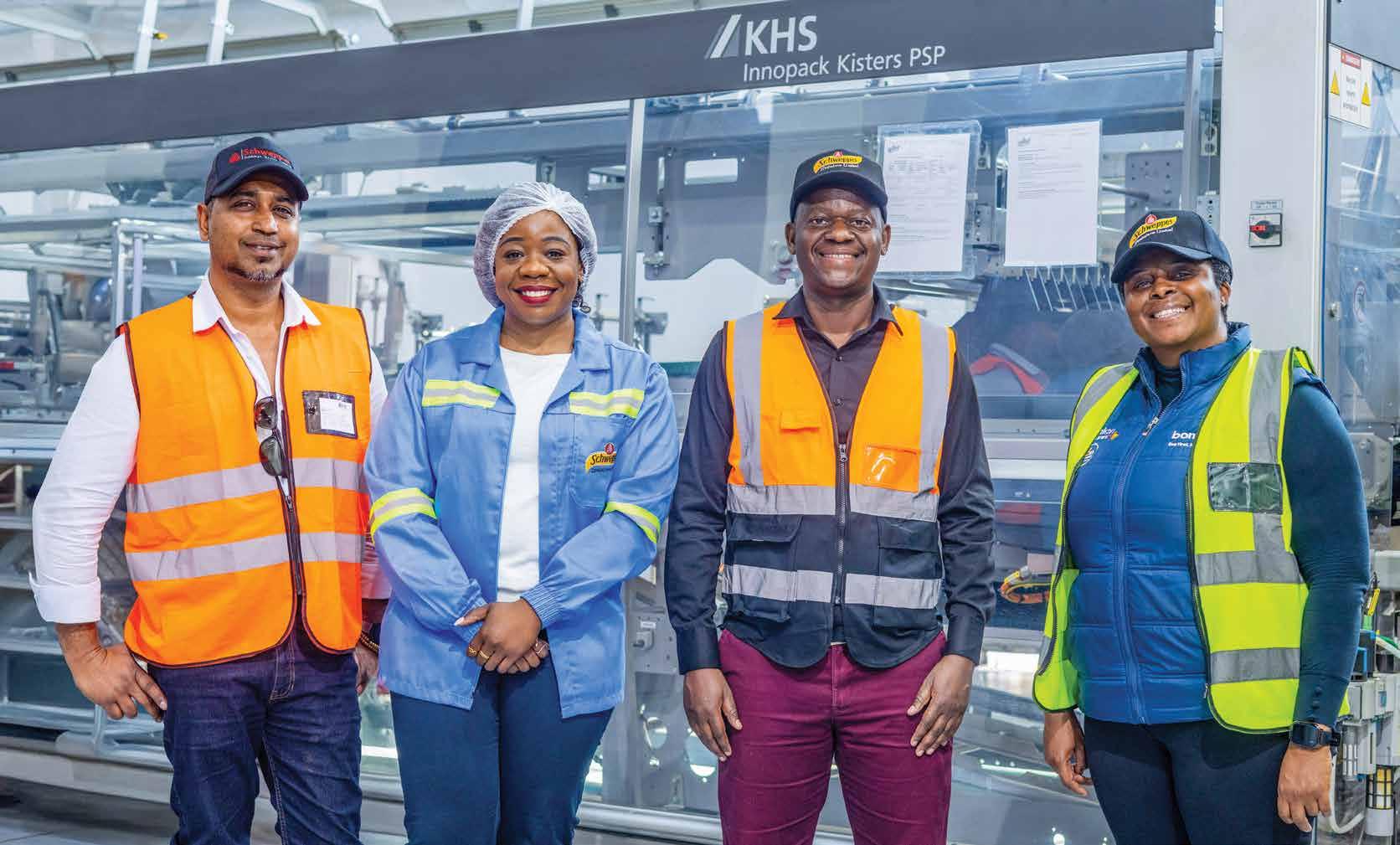

Until very recently, the production shop at Schweppes Zimbabwe Limited in the Willowvale industrial area in the capital of Harare called for low volume outputs. The recent installation and commissioning of a completely new non-returnable PET line had the beverage producer convinced; it is equipped, among other things, with a compact InnoPET BloFill stretch blow molder/filler block for the manufacture and filling of up to 36,000 containers per hour, the efficient Innoket Neo labeler for roll-fed labeling of the bottles, the Innopack PSP Advanced shrink packer and the flexible Innopal PB N palletizer. Continuous monitoring by KHS inspection technology ensures that only containers of perfect quality leave the plant. There were many reasons behind the decision to award the Dortmund turnkey supplier the contract, as Ms Ropafadzo Gwanetsa, corporate affairs executive at Schweppes Zimbabwe Limited explains. “KHS is considered to be a reliable systems provider by our parent company, The Coca-Cola Company, and is valued for its expertise in highly-efficient filling and packaging systems. Its range of holistic services that includes extensive technical support is also convincing.”
Production capacities increased by 300%
SZL continues to be extremely enthusiastic about the speed of the line in particular; compared to the previous competitor setup, Gwanetsa reckons that production capacity has increased by 300% – so much so, in fact, that the company’s current warehouse will probably have to be enlarged. This was a necessary step to take, for the demand for filled juice from flagship brands Mazoe Orange Crush or Minute Maid and for Bonaqua and Schweppes still water continues to grow on the domestic and regional markets.
Production is also proving more professional than before in its flexible processing of various packaging formats holding between 400 milliliters and two liters. “The ability to easily process a whole range of different container sizes on a single line, with format changeovers now much quicker, gives us a great competitive edge over other bottlers,” says Gwanetsa, who also appreciates the automated processes on the new acquisition. “Operator intervention on the line has been reduced to a minimum, thus improving the efficiency of our production line.”

Gwanetsa illustrates the positive development brought about by modernization with further figures. “We’ve managed to cut our overall costs by about 80% compared to the former setup, with a 10% reduction in personnel requirements making a positive contribution to this.” Regarding resource savings, the new KHS plant engineering also scores with an up to 30% decrease in energy consumption, savings in water and CO2 and similarly reduced labeling costs. “Together with the entire group, we’re adopting an ambitious sustainability strategy with a directly noticeable cut in
greenhouse gas emissions and also aiming for climate neutrality. Our state-of-the-art KHS technology is helping us to successfully pursue this objective.”
Savings in resources are also being made by consumption of less material for primary packaging. Thanks to proven KHS stretch blow molding technology, high-quality lightweight PET containers are now manufactured using up to 10 to 15% less raw

material. Gwanetsa mentions a further major criterion with respect to sustainability: the long service life of the machines. “We’re factoring in the new NRET PET line for the next 20 years,” says the Schweppes expert. The longer the bottler operates a line, the lower its ecological footprint throughout its entire life cycle. “Our machines are often in successful operation for customers over several decades, with this alone meaning less impact on the environment,” confirms Bradley Naicker, KHS sales manager for South Africa, who reports on one special challenge
faced in the course of this particular project. As the amount of room available at the Schweppes production site in Harare was extremely limited and the new system had to be installed in a small area, the KHS experts adapted the machinery to fit the available space. The line was thus installed in an L shape instead of the usual rectangle – in record time. Just six weeks after installation, the first saleable product ran off the belt – thanks to the excellent cooperation between KHS’ and SZL’s project teams.
+ Innoket Neo The Innoket Neo labeler with a roll-fed station ensures precise and efficient hot-melt, wrap-around labeling of PET bottles.



+ Efficient control: With its role-based access system the ClearLine HMI operator panel (Human Machine Interface) facilitates work on KHS systems, such as the Innopack PSP Advanced shrink packer, and meets all the requirements of modern and complex machine operation.
+ Modular flexibility : Thanks to the Innoket Neo’s flexible design, the individual modules on this highly customizable labeler can be freely combined.

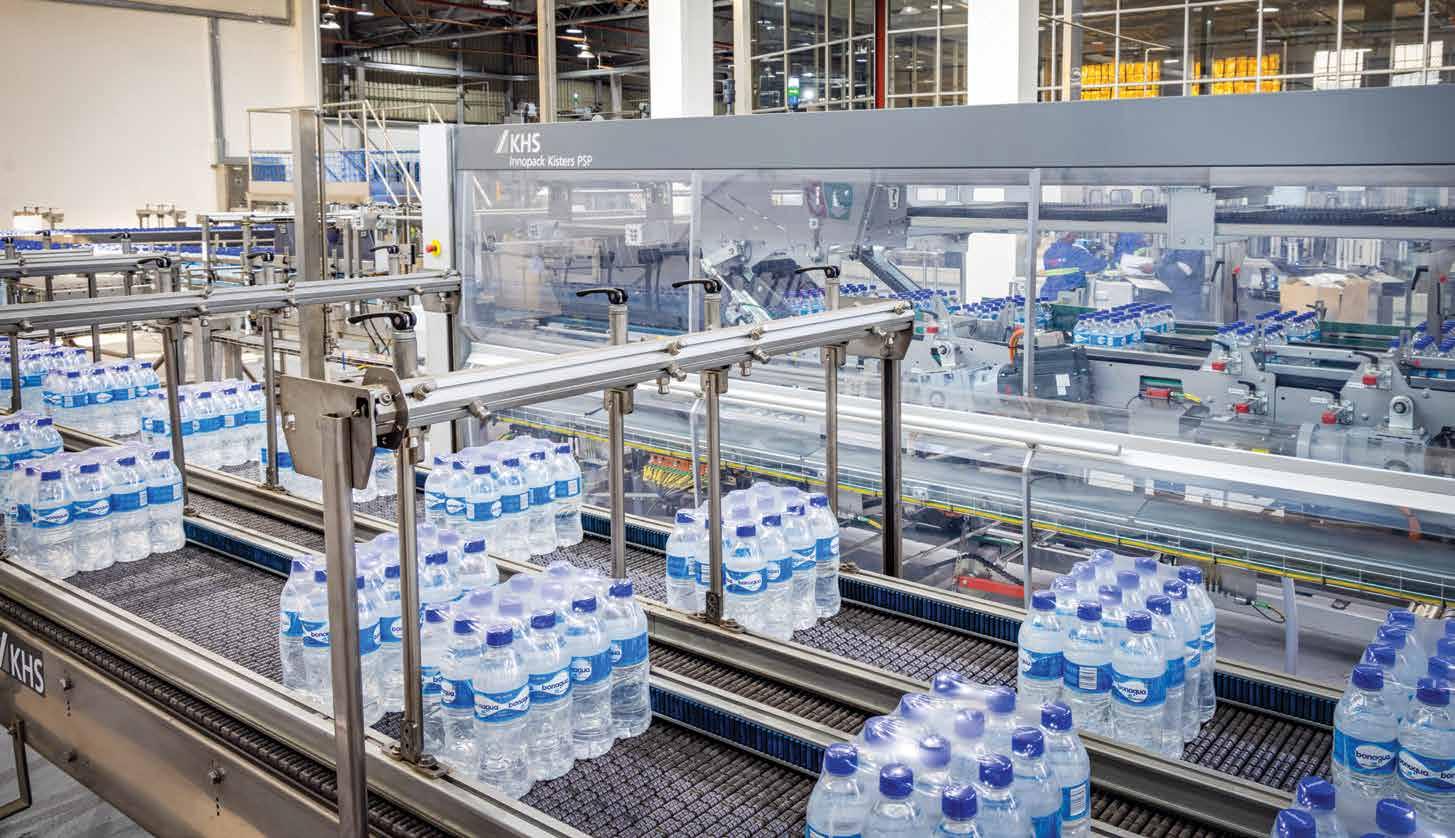

Customer’s individual palletizing requests met through advanced innovation
Special customer requirements also needed to be met the robot palletizing section. As the PET bottles are produced in certain special formats, the bottler uses specific pallets that, like the containers, do not correspond to the norm. “We were able to adapt the robot palletizer to pack the respective SKUs through individual robot programming and thus achieve an optimum result,” Naicker explains. Schweppes’ utmost satisfaction was ultimately sealed by the systems supplier’s successful project processing performance. “Through KHS’ holistic range of services, we benefitted greatly from the close support provided for the entire duration. This was manifested in the training we were given and the global transfer
of knowledge from KHS engineers to our local team. After commissioning, we’ll continue to receive further training remotely,” says Gwanetsa. “Processing times are short and the engineers are always available.”
KHS ReDiS (Remote Diagnostic Service) has proved to be a valuable system and has greatly supported the of skills transfer process and maintenance of the line as commissioned.
Naicker happily looks back on what has been achieved here. “We’ve exceeded expectations regarding production capacities, economy and the use of resources. SZL is now bottling more beverages of a better quality at a lower cost and with a smaller carbon footprint.”




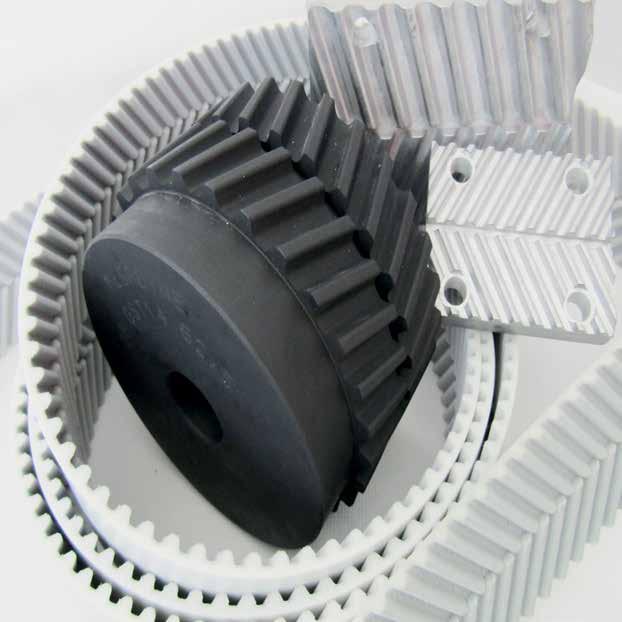


Welcome to the Megadyne world, a place of innovative power transmission solutions. Megadyne is a group of talented people supporting their customers in achieving operational perfection. The company invests in skilled designers and engineers, who are the key factor in providing the most innovative Megadyne power transmission belt systems. As field experts, they thoroughly analyse and study industrial processes to develop new solutions and upgrades to the already existing ones.

Sustainability is as important as ever at Megadyne. The group consists of like-minded people cherishing the beauty of the world, focused on preserving it for generations to come. For that reason, they produce solutions which last longer, save energy, emit less noise and limit the overall carbon footprint of customers. Contact us. Welcome to Megadyne power transmission solutions.

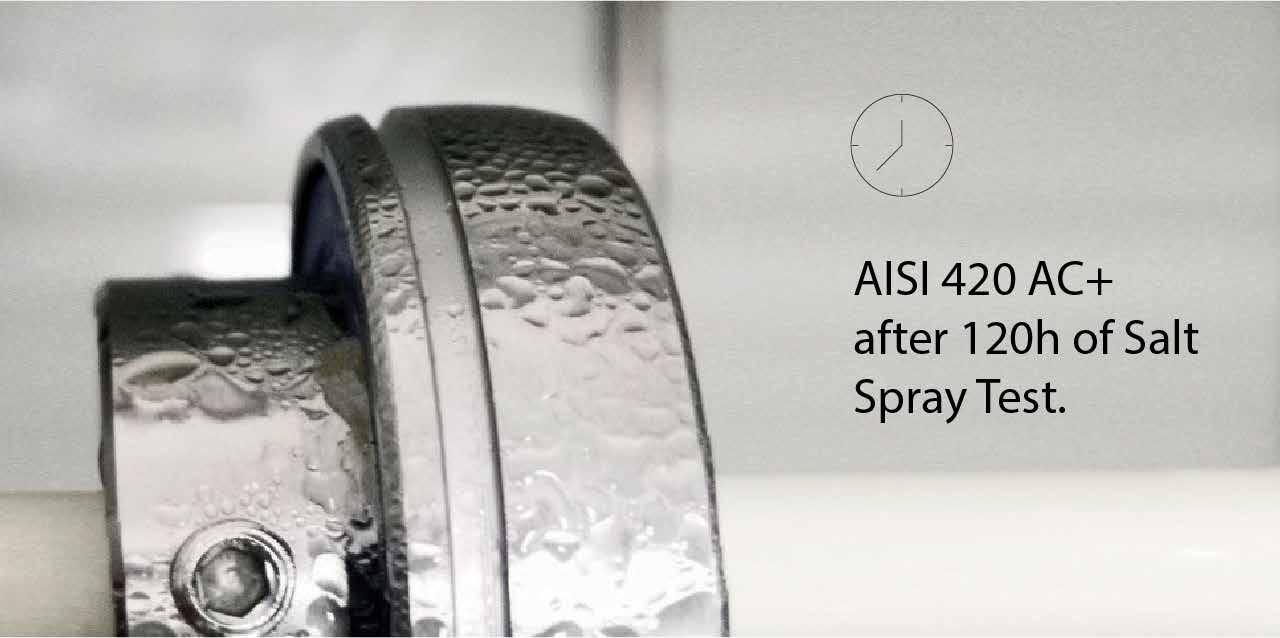

Meet the Stars of the ZEN’s Food-Safe Bearing Line.
In earlier issues, we unveiled ZEN’s breakthrough Food-Safe Bearing Line. Now, it’s time to shine a spotlight on two standout stars: the AISI 420 AC+ bearings, which offer a cutting-edge surface treatment that doubles their lifespan, and the FBS bearings equipped with Solid Oil.
Both products deliver unbeatable, 100% hygienic protection, proving that durability and cleanliness can go hand in hand. Let’s take a closer look!
All products within the new ZEN FBS Line tackle:
+ Corrosion: Offering excellent protection against moisture, cleaning agents, and food acids.
+ Regulatory Compliance: All materials comply with regulatory standards ( FDA, NSF), ensuring the bearings meet hygiene and legal requirements.
+ Hygiene and Cleanability: Non-porous surfaces, smooth finishes, and accessible cavities make the FBS Line easy to clean, minimising risks of bacterial growth, cross-contamination, and non-compliance.
+ Extreme Temperatures: Specially suited for equipment operating in harsh temperature conditions.
The Stars of the Show STAINLESS STEEL FBS AISI 420 AC+ BEARINGS:
These bearings are enhanced by ZEN’s exclusive surface treatment, offering superior rust protection compared to standard AISI 420 and AISI 440 stainless steels.
They comply with FDA and RoHS standards and last twice as long as standard stainless steel bearings, reducing replacement costs and downtime due to corrosion.
As you can see, after 120 hours of testing, the AISI 420 stainless steel with AC+ treatment remained virtually untouched by corrosion. No rust was found on the inner or outer rings—only minor rust spots appeared in the oil groove.


FBS BEARINGS WITH SOLID OIL:
+ What is Solid Oil?
Solid oil is a special lubricant made of a polymer material with millions of micropores that hold the oil by molecular tension.
+ How Does it Work?
The oil fills the bearing's internal space and moves with the retainers and rolling elements. During operation, small amounts of oil are released from the polymer to lubricate surfaces. When the bearing stops, the oil is reabsorbed into the micropores.
Advantages of FBS Bearings with Solid Oil
1. Effective Contamination Prevention
+ Fills the internal space, leaving no gaps for bacterial growth.
+ Prevents solid, powdery, or liquid contaminants from entering.
+ Doesn’t leak or drip—even under steam, water, or aggressive cleaning
2. Low Maintenance
+ Solid oil bearings can contain up to four times as much oil as grease-lubricated bearings, allowing them to be lubricated for life.
3. Superior Low-Temperature Resistance
Thanks to the polymer in the lubricant, bearings can resist lower temperatures than those that use standard lubricants.
4. Higher Chemical Resistance
+ The solid oil increases the bearings' chemical inertness, making them more resistant to cleaning agents and harsh sanitisation, ensuring a longer lifespan.
5. Minimised Condensation and Corrosion Risk
+ This lubrication system eliminates air gaps that cause condensation, reducing internal rust risk and making these bearings ideal for humid, washdown, or refrigerated environments.

More about the FBS line:
→ Other Products Available:
+ Stainless steel, ceramic, and hybrid bearings
+ Thermoplastic and stainless steel housings
+ Stainless steel inserts
→ Materials:
+ AISI 304 and 420 stainless steel, AISI 420 AC+ (surface treatment), thermoplastic and ceramic.
→ Seals and Shields:
+ FDA-approved synthetic rubber (NBR) with metal shields.
+ PTFE.
+ AISI 304 Shields.
+ Housings with end caps.
→ Lubrication:
+ Pre-lubricated with Mobilgrease™ FM—FDAcompliant, NSF H1 registered, and certified Kosher/Parve and Halal. Also, solid oil is available for certain references.
Download the brochure and explore the full line or get in touch with them at sales.uk@zen.biz!
If you are looking for bearings that thrive in the food industry's harsh conditions, the ZEN FBS Line is the answer!



One of the important applications of steel plants is cold rolling, used to process high grade steel strips and other type of strips. Due to high requirement on the finished products, the demand on the backup rollers has also increased a lot.
The backup rollers are used in cold working machines for straightening, levelling, and other flattening operations. It is subjected to very high radial forces, sometimes in combination with axial forces. These backup rolls are application specific and comes in various types of internal and external design. They can be lubricated for life or can be lubricated periodically. They should also have a low starting torque to
overcome friction. In many cases these rolls are used in wet conditions with a large quantity of water and oil, mostly in an adverse environment with lot of pollutants. In such applications, there is a possibility for premature corrosion & wear, so to face this problem a rigid sealing system has to be used. Much attention must be done to the lubricant and the sealing system.
Since the past 15 years TTS is developing backup rolls of various designs specific to the the applications. The longest backup roll which TTS can produce is of 400mm shaft length. Based on the application and the usage, the technical department of TTS performs the technical calculations, finalize the internal design and other technical parameters which are necessary to run the bearing successfully. The technical department of TTS is well equipped with the state of art modelling & analysis software’s and uses CMM and advanced roundness metrology for measuring the back-up rollers. An alternate check is carried out to measure the starting torque values post mounting. TTS can also provide special surface coatings and also manufacture using special materials such as stainless steel. TTS is proud to have successfully delivered many projects involving the design and supply of back-up rollers for various applications and would continue to do so.
Each step of the component production process is monitored by quality control which carries out both dimensional and geometric measurements using specific instrumentation.
In addition to the design and construction of back-up rollers, TTS has activated a revamping service on used back-up rollers (both its own production and those of other manufacturers).
Normally the life span of a bearing is determined by the appearance of signs of fatigue on the raceways and rolling elements, while in these applications, very often the deterioration of the outer surface of the outer rings (which occurs much earlier) can cause a decline in the quality level of the finished product. Therefore,


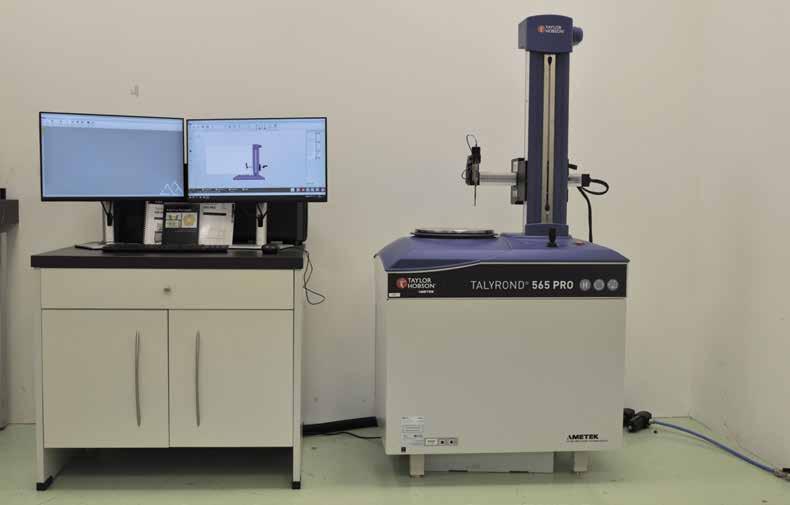
Diam Est Retrofittato 001
Diam Est Retrofittato 002
Diam Est Retrofittato 003
Diam Est Retrofittato 004
Tabella parametri (parametri di cilindricità) - Cilindro creato

DOCUMENTO A.Q. / A.Q. DOCUMENT
RAPPORTO DI COLLAUDO GEOMETRICO / GEOMETRIC TEST REPORT MOD. M8_02.5 BIS Rev 01
DOCUMENTO A.Q. / A.Q. DOCUMENT RAPPORTO DI COLLAUDO GEOMETRICO / GEOMETRIC TEST REPORT
Tabella parametri (parametri di planarità) - Quadratura
Parametri di planarità
Tabella parametri (parametri di planarità) - Quadratura

Tabella parametri (parametri di rotondità) - Diam interno





restoring the contact surface between the work rollers and the back-up rollers allows the life of the backups to be significantly extended, with a consequent economic saving for users together with a reduction in environmental impact.
The reconditioning of back-up rollers requires considerable know-how since after disassembly, washing and identification of the individual parts (necessary because interchangeability is not guaranteed), an accurate instrumental analysis of each individual component is carried out to guarantee the dimensional and geometric characteristics envisaged by the project.
After all the analysis it is possible to evaluate the economic aspect of the reconditioning which includes:
+ grinding of the external diameter of the outer rings
+ replacement of damaged components
+ washing and assembly
+ final testing and certification
The technical department of TTS is always available for helping the users of back up rolls for revamping and designing new bearings tailor made as per their application.
They can be easily reached on info@tts-europe.com For further information please visit their website, www.tts-europe.com.



At LogiMAT 2025, Megadyne showcased one of its most advanced solutions, the Quiet, Self-Tracking (QST) System, a key component of its renowned product portfolio.

Designed to address the pressing challenges faced by logistics and material handling operations, the Megadyne QST System outperforms standard straight-tooth profiles, offering benefits in noise reduction, energy efficiency, and operational reliability.
Luca Zironda, Megadyne's Global ISM Material Handling & Automation Power Transmission, explains, "Traditional systems with standard straight tooth profiles often present compromises such as persistent noise, energy inefficiency, and frequent maintenance requirements. The Megadyne QST system effectively addresses these issues and provides a quieter and more efficient solution”
Why choose the Megadyne QST System over Standard tooth profiles?
The advanced tooth design of the Megadyne QST system distinguishes it from standard straight tooth profiles, enhancing power transmission and energy efficiency. By significantly reducing noise and vibrations, this system not only creates a more compact layout and comfortable working environment but also improves energy consumption and operational output.
The key benefits of the Megadyne QST system are:
1. Improved worker comfort: A quieter, safer work environment
High noise levels in traditional conveyor systems contribute to stress, fatigue, and decreased productivity among workers.
The Megadyne QST system drastically reduces sound levels, creating a more comfortable and less disruptive environment. The reduction may be so significant that ear protection could become unnecessary even with high-speed high-load intralogistics applications.
2. Operational Efficiency: reduced downtime and maintenance costs
Thanks to its self-tracking and low-maintenance design, the Megadyne QST System outperforms traditional straight tooth profiles by requiring
fewer adjustments and reducing wear and tear. This translates into longer service life, fewer repairs, and reduced downtime, leading to cost savings and more reliable operations.
3. Business benefits: Reduced energy costs and waste
From a business perspective, the energyefficient operation of the Megadyne QST System is a key advantage. The system helps companies cut down on energy consumption, lower energy waste and costs, and reduce their carbon footprint.
Megadyne’s commitment to innovation and efficiency
“The Megadyne QST system is a perfect example of how innovation can drive meaningful improvements across multiple facets of a business,” says Luca Zironda. “By addressing issues like noise, energy inefficiency, and high maintenance costs, the QST system transforms the way logistics operations are managed, offering both immediate and long-term benefits.”
Ready to optimise your logistics operations with a quieter, more efficient system?
The Megadyne QST System is the solution. Contact us for more information and discover how the QST System can revolutionise your operations.
Traditional systems with standard straight tooth profiles often present compromises such as persistent noise, energy inefficiency, and frequent maintenance requirements. The Megadyne QST system effectively addresses these issues and provides a quieter and more efficient solution.
Luca Zironda

Imagine you’re cruising along the highway.
Scrolling through the dashboard options, you se that your oil temperature is steady, your coolant temperature is secure and your speed is set to a desired level. On a trip like this, those conditions will
largely remain the same. You’ve achieved a stabilized situation. The heat generation and heat dissipation capacity of all systems is in balance.

But what happens when outside conditions change –the grade becomes extremely steep; you’re pulling an oversized trailer; the air conditioning is running and it’s 98 degrees outside? You might experience a thermal imbalance unless you adjust your expectations of the vehicle or the design team tested to ensure sufficient cooling capacity to maintain thermal equilibrium consistent with all component physical limitations.
In most bearing applications, normal operating conditions are going to shift to some degree.
However, in some sectors, particularly those related to electrification, space and even automotive and heavy equipment, those conditions are being pushed to the limit. Companies desire weight reduction, operation at higher speed and load and reduced power loss from lubricant churning, resulting in potentially higher thermal output from the bearing.
“They want to have the least amount of lubrication, push the bearing faster and faster and downsize everything to reduce weight,” noted Chris Napoleon, president and chief engineer at Napoleon Engineering Services in Olean, New York. “So, we might have heavier loads on a smaller bearing with less lubrication, and now we’re in danger of experiencing a heat imbalance.
“We’re generating so much in this smaller package, straining the overall system.”
UNDERSTANDING the complexity of heat imbalance failure is important. According to the Failure Atlas for Hertz Contact Machine Elements, heat imbalance failure results from heat generated in excess of the heat simultaneously removed. It differs from other contact component failure modes in that it’s a systems failure; the effects may manifest themselves primarily on one or a few components, but the failure mechanism is the loss of thermal equilibrium of the machine element as a system.
It is comprised of three failure events:
1. The steady state of thermal equilibrium in a volume enclosing the machine element gives way to an excess of heat generation over heat removal.
2. The temperature of some or all contact components and often that of some other components of the machine element (including the lubricant) rises in an excursion above the maximum design level.
3. Depending on the magnitude, location and duration of the temperature excursion, several different intermediate failures might occur, including lubrication failure and loss of operating clearance.

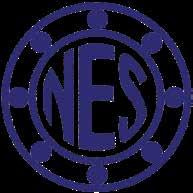


THE RESULTING lubricant degradation, loss of operating clearance and wear generally leads to large parasitic loads on the Hertz contacts. The increased load further increases heat generation, creating rapid, often catastrophic failure. But the ultimate failure of heat imbalance is a runaway temperature excursion, often referred to as a “burn-up.”
Major heat imbalance could cause the destruction of an application through one of many failure modes. These include galling (with seizure), hot plastic deformation, fracture and melting of plastic components. Lesser heat imbalance events, if arrested, may leave no observable effects or result in a long-term effect that causes potential future failure. Among those are loss of lubrication supply, lubrication decomposition and loss of hardness.
Is all this really the fault of the bearing?
“If the bearing is designed and manufactured correctly then perhaps not,” Napoleon said. “It’s a slippery slope. The bearing industry has significantly improved material quality, incorporated design optimization to distribute stress and reduced frictional characteristics through design or manufacturing components. As a result, theoretical L10 bearing life has increased. This suggests that you can downsize the bearing or increase the load and speed conditions and show acceptable design life.
But will you still be in a stabilized thermal condition? Such actions put a greater demand on the OEM’s
design engineering to draw in sufficient heat dissipation capability as the margin for thermal stability can be far less when design goals push beyond the norm.
“We’re asking more of our grease and dry film lubricated bearing solutions to eliminate oil delivery systems,” Napoleon said. “Therefore, the OEM design engineer needs to consider how one will remove the heat that’s historically not been at this level and likely removed by oil delivery and cooling systems.
“There’s no magic bearing component solution to solve heat dissipation. The bearing engineer can incorporate friction-reducing design controls, self-lubricating cages and wear resistant thermal treatments. The system or OEM designer has the distinct responsibility of providing sufficient cooling capacity to compensate for operations that often do not co-exist with standardized formulas for calculation of bearing life and heat generation.”
This means that sufficient time and effort needs to be put into performing experimental design and physical testing to determine what level of heat generation is created by component level solutions and the necessary cooling capacity.”
“People often don’t think a lot about that.” Napoleon concluded. “But that’s what you need to do to achieve your original goal, which is stability; the same stability you might enjoy while driving down the highway.”
(Courtesy of J.P. Butler, Marketing Coordinator, Napoleon Engineering Services)





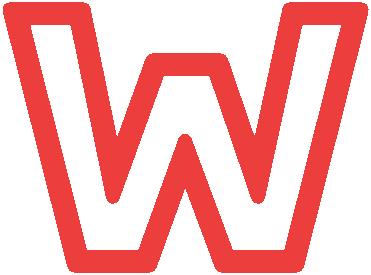



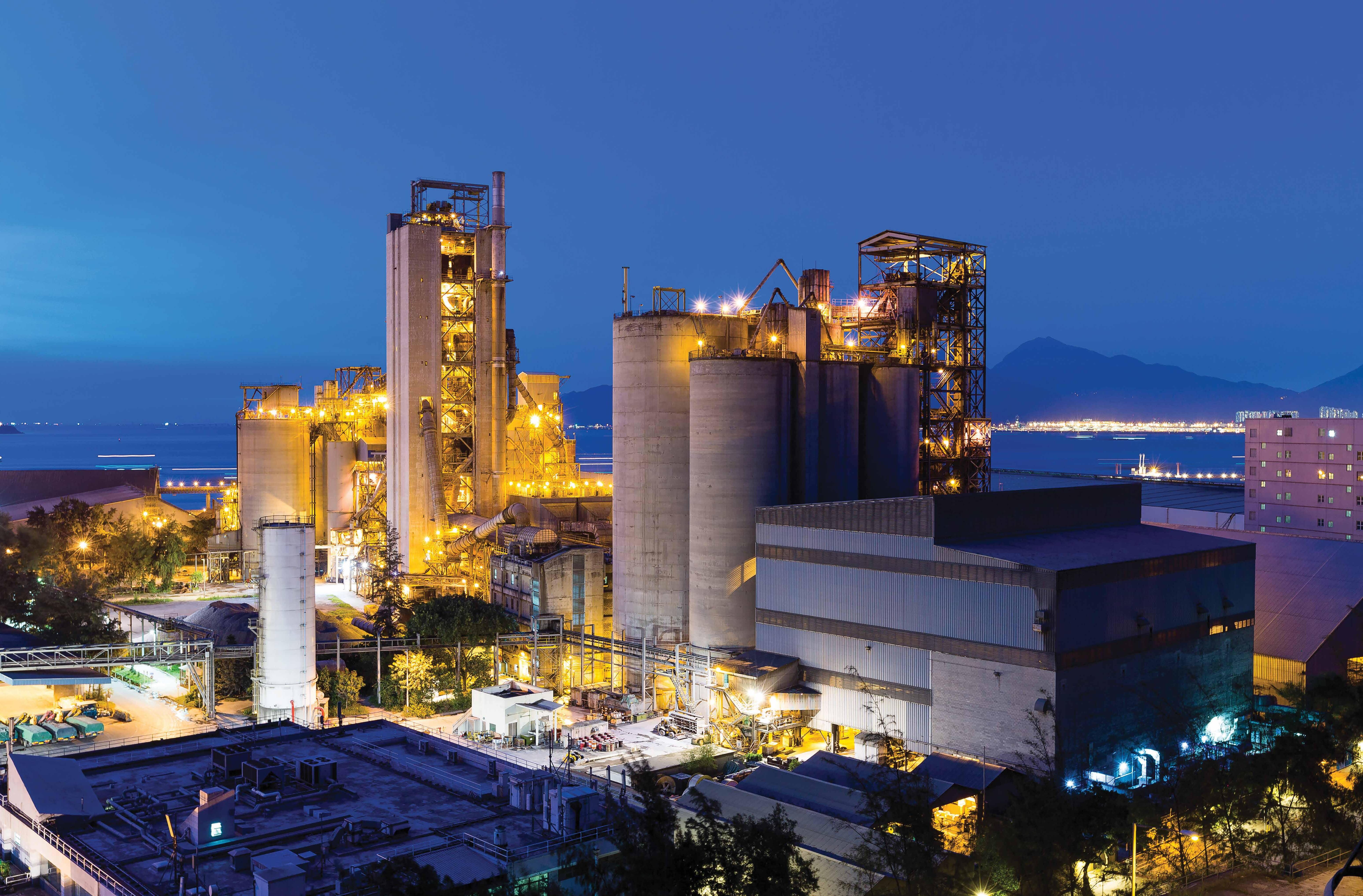




Menzel Elektromotoren fills a gap in the market with its range of pressurized Ex p motors, configuring them from stock components in the shortest possible time. Menzel recently built an Ex p compressor motor for an internationally active Austrian chemical company within three weeks. The squirrel cage motor from the MEBKSW series was modified in various ways to suit the application and site-specific requirements. The motor case was fitted with an air purge system that allows the motor to be flushed with an inert gas mixture before startup in order to remove potentially explosive atmospheres and to maintain a constant positive pressure during operation, thus preventing ingress of hazardous gases. The motor was labeled II 3G Ex pzc IIB T3 Gc. Additional works included: conversion to cooling type IC 81W (watercooled), mechanical adjustment from size 560 to size 630, repositioning the terminal boxes, preparation of the neutral box for the installation of current
transformers, adjustment of the flanges for the slide bearings and installation of vibration sensors. Menzel visited the customer’s plant even before the order was placed to discuss details and observe the installation situation and eventually also installed and commissioned the drive system.
In 2023, Menzel received the TÜV certification for the manufacture of squirrel cage motors in ignition protection type Ex p, pressurization for Zone 1. The German motor builder can apply the manufacturing procedure to stock motors in a wide output range and is thus able to quickly and flexibly provide competitively priced Ex p motors featuring the product categories 2G and 3G. This type of construction is available for all voltage ranges as well as with air-to-air or air-to-water cooling (cooling types IC 611, IC 616 or IC 81W). At the 2023 AEMT Awards, these motors were named Product of the Year.
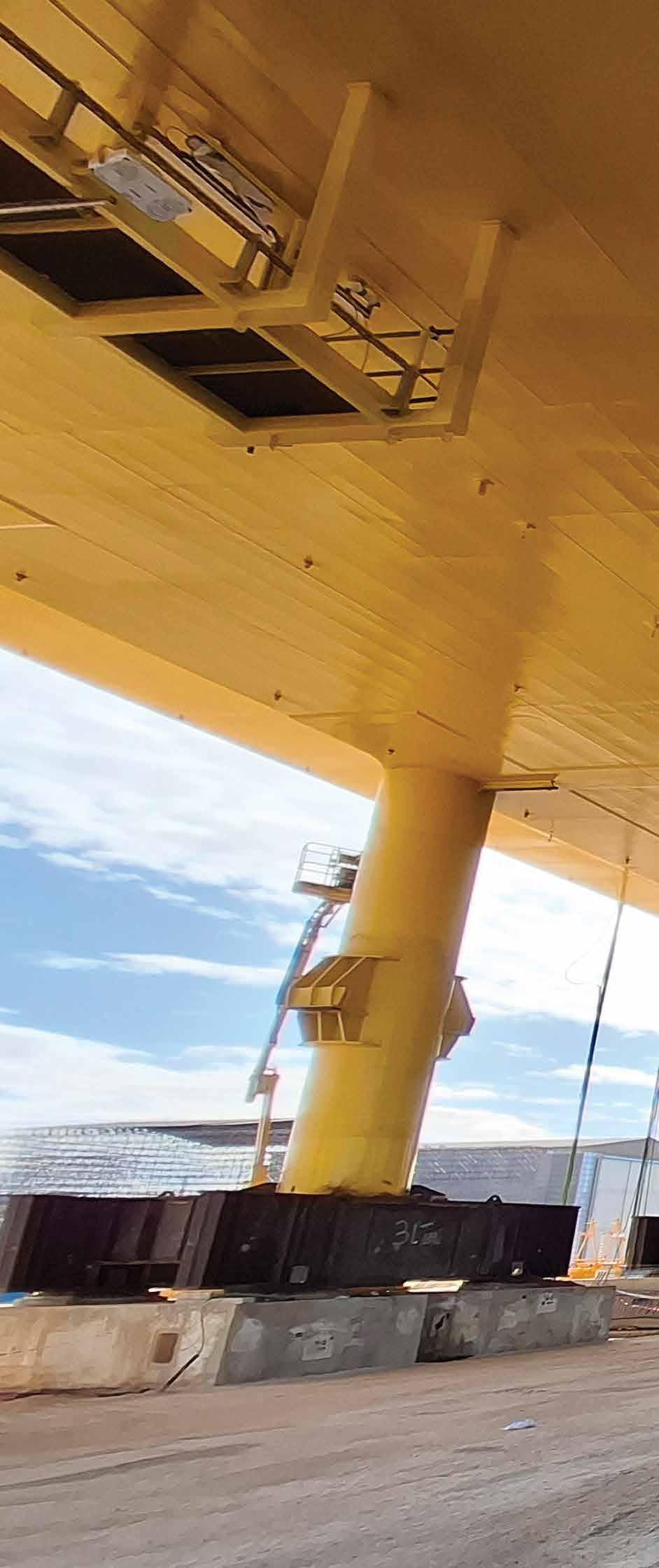
The all new BorWin5 high-voltage direct current transmission system will be key to supplying clean energy to more than one million households in Germany.
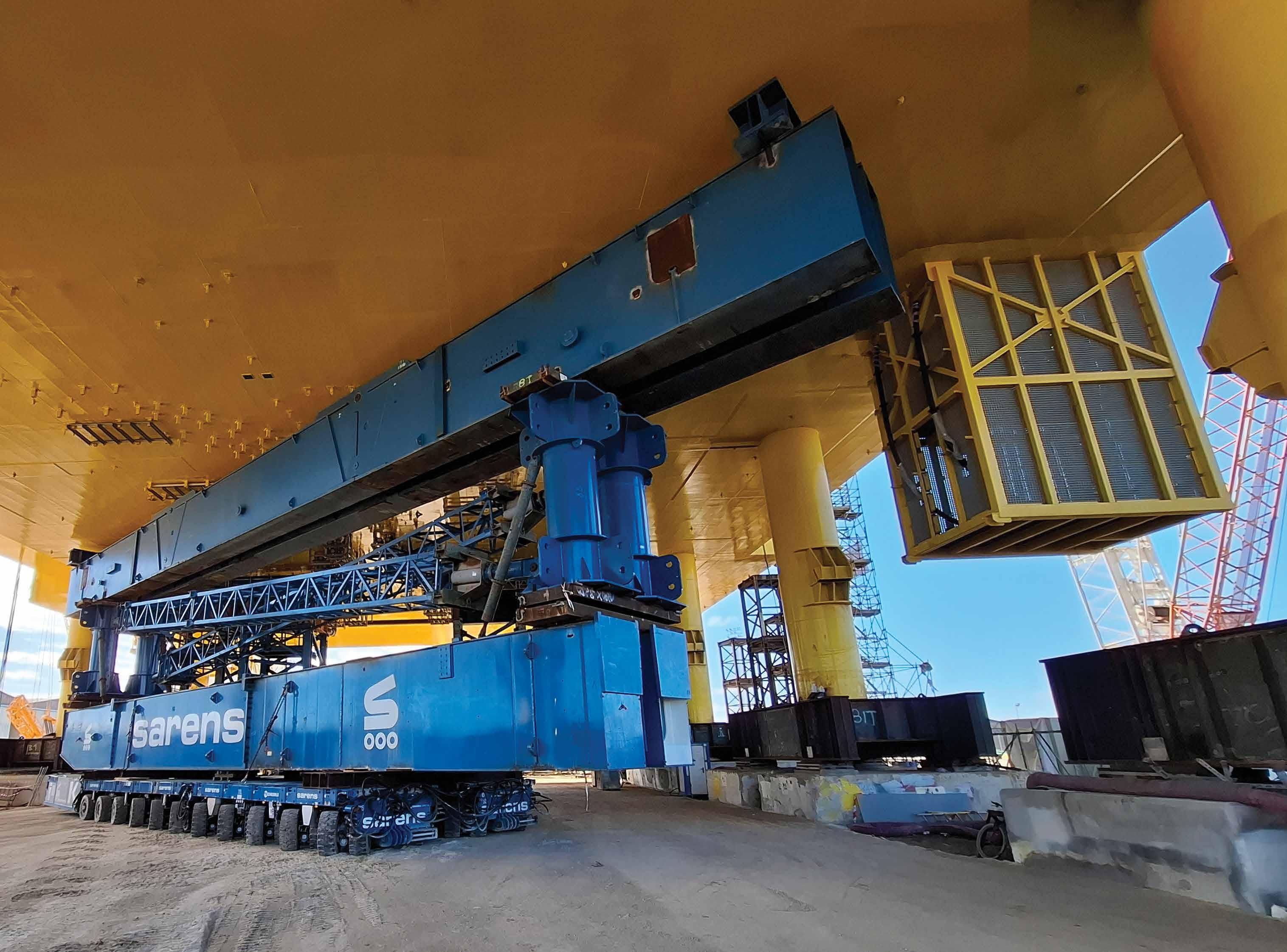
The system is designed to connect the He Dreiht wind farm, located in the North Sea off the coast of Cloppenburg in Germany, to the onshore grid.
Construction of the HVDC platform has been carried out in Puerto Real, Spain, by Dragados Offshore, from where it has already departed for the North Sea by barge.
Sarens' involvement in this project stands out as one of the most significant in the company’s history, involving one of the largest deployments of axle lines to date and the heaviest module ever lifted worldwide.
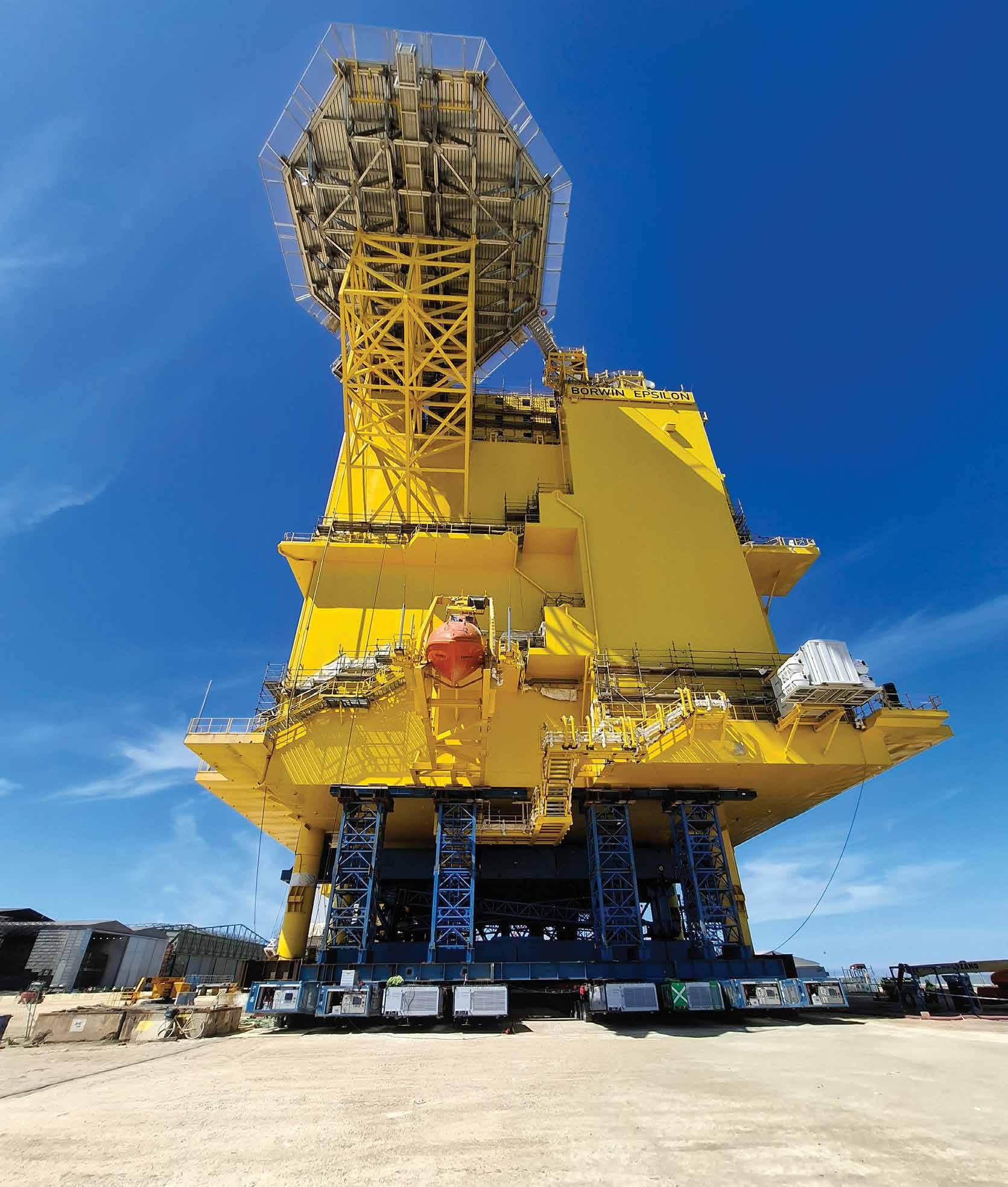
The new BorWin5 high-voltage direct current (HVDC) transmission system will be of vital importance for the smooth operation of the He Dreiht wind farm, which is currently under construction off the German coast of Cloppenburg in the North Sea. Thanks to this unit, it will be possible to transport the energy produced at the installation- estimated at 900 MWto the onshore grid and supply more than one million households in Germany with clean energy.
This unit, which has been assembled in Puerto Real, in the province of Cadiz (Spain), by Dragados Offshore, is already travelling to the North Sea by barge. Once in its final location, it will be installed
together with the 64 Vestas V236-15.0 MW turbines that the He Dreht wind farm will have, before its expected commissioning at the end of 2025. He Dreiht, one of the first offshore wind farms to be built without public funding, is seen as one of the cornerstones of Germany's energy transition.
Sarens, world leader in heavy lifting, engineered transport and crane rental services, was strategically involved in the tasks of transporting the jacket and topside from the manufacturing plant where the HVDC unit was assembled to the barge (1,5 km approx.) on which it travels to the North Sea. To do this, the Sarens technical team decided to use around 2000T of


transport stools, 48 load cells and 500T jacks, as well as 476 axle lines of SPMTs. This project stands out as one of the most significant in Sarens’ history, involving one of the largest deployments of axle lines to date and the heaviest module ever lifted worldwide.
The Sarens team, operating on behalf of Dragados Offshore, encountered a challenging scenario due to three weeks of heavy rains off the coast of Cadiz, which made the assembly of the transport stools particularly difficult. Similarly, the task of removal of 2000T of stools from beneath the topside was also a major challenge, as the structure had numerous protruding parts that required a specially careful maneuvering.
HVDC units are of paramount importance for the correct operation of any offshore wind farm, as they are responsible for transforming the alternating current generated by the turbines into direct current. In the case of the BorWin5 unit, it will be responsible for the energy conversion and transport of the electricity generated via a 120 km underwater cable to Norderney, and then via a 110 km underground cable to the onshore connection point.
According to José Mª Martínez, Sarens Key Account Manager, “with the transport of the BorWin5 HVDC
unit, we have proven our ability to adapt to any type of task thanks to the use of the most advanced high-tech equipment, but especially thanks to the experience we have acquired over decades in projects of all types and magnitudes. Although this time we have set a record for our company, we are ready to break this record and continue to tackle strategic projects that contribute to the energy transition in Europe or anywhere else in the world”.
Sarens has extensive international experience in the assembly and maintenance of wind farms. It has participated in various installations in France such as Fécamp, Saint Nazaire, Provence Grand Large and in the lifting and transport work for the foundation bases of the new offshore wind farm in Saint Brieuc, located off the Brittany coast. During this project, Sarens successfully transported loads weighing over 1150 tons. More recently, Sarens has been actively involved in the reception and loading operations of monopiles and transition pieces for 176 turbines for the Coastal Virginia Offshore wind farm in the US and the marshalling and installation of 62 monopiles in the Moray West offshore wind farm, each weighing up to 2000 tons, the largest and heaviest XXL monopiles ever to be handled in the UK.







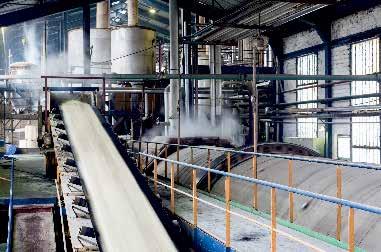
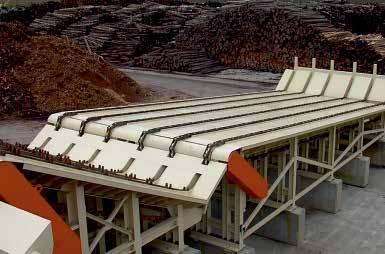




Arnold Magnetic Technologies Corporation (“Arnold”), a subsidiary of Compass Diversified (NYSE: CODI) and leading global manufacturer of high-performance magnets, electric motors and precision thin metals, empowers manufacturers to build smaller, lighter, and more efficient motors and generators with ArnonTM Non Grain Oriented Electrical Steel (NGOES). With optimized thickness and finish, Arnon NGOES creates considerable energy savings by reducing eddy currents. This optimization enables manufacturers to meet the most demanding needs of high speed, high efficiency motor and high efficiency transformer applications.
To laminate these structures, many manufacturers use NGOES due to the electrical steel’s circularity and equal magnetic properties in all directions. Depending on the design, either the rotor or stator will incorporate laminated structures. But not all NGOES are created equal.
Manufacturers frequently use Arnon NGOES as laminations in high speed, high efficiency motors and generators due to the material’s optimized
thickness. Arnold manufactures NGOES in thicknesses of 0.004", 0.005" and 0.007" (0.102mm, 0.127 mm and 0.178 mm). This marks a significant reduction from the typical thickness of NGOES laminations, which often come in 0.0118" to 0.0185" (0.30 mm to 0.47 mm) thicknesses.
Thinner laminations help high speed motors and generators achieve higher levels of performance through improved efficiency. Arnon NGOES proves particularly advantageous in higher frequency motors and generators above 400 HZ. The thinner material offsets effects created by increased eddy currents and subsequent heat buildup. Thin laminations built with Arnon thus produce a more efficient unit and free up design constraints. Arnon laminations also lead the industry for switching frequencies above 1K Hz.
Several motors manufactured with Arnon have exceeded 98% efficiency. And so, it comes as no surprise that Arnon can lower core loss by up to 50% when compared to other NGOES.


EGE-Elektronik has revised its intrinsically safe optical level sensors for liquids with ATEX/IECEx approval for use in Zone 0 and is launching the new, improved UF2 series. The optical measuring principle works independently of the dielectric constant or conductivity of the liquid. This sets the sensors apart from conductive, capacitive or microwave-based level controllers, which are unreliable in detecting liquids with a low dielectric constant. The UF2 optical sensors, on the other hand, also accurately detect these media, which include many hydrocarbon compounds, solvents and oils.
Featuring a glass tip, the level sensors are also suitable for detecting kerosene or gasoline. The case is made of 1.4571 stainless steel. The improved series boasts various process interfaces such as G-thread, NPT thread, cutting ring fitting, triclamp or flange. Depending on the type, the sensor’s electrical connection is made via M12 connector, cable or clamping space. Customers can specify the required sensor and cable length for individual configuration. The level sensors are only intended for operation with an IKMb 123 Ex series evaluation device for DIN rail mounting, which provides a relay/changeover output and can be operated at 24 V DC or 115 V AC or 230 V AC, depending on the model.



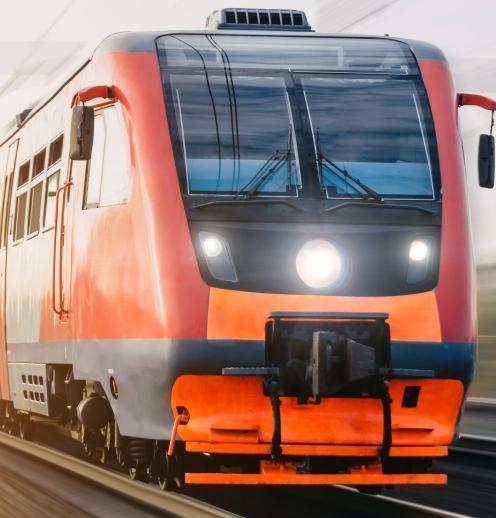



Even the largest sensor program cannot cover every particular need. Therefore, EGE-Elektronik flexibly answers a wide range of customer demands – from branded OEM versions to special materials for aggressive media and processes with high-pressure cleaning. The German company is established as a manufacturer of durable, precise sensors for extreme ambient conditions. Thanks to a high level of vertical integration and profound application know-how, the company can fulfill most requests quickly and at manageable costs, even in small production runs. This includes various certifications and approvals such as DNV (formerly Germanischer Lloyd), UL or 3-A. The portfolio includes measurement technology for flow monitoring and level and object detection. Virtually all sensor properties can be adapted to specific applications: measured value output, sensitivity, probe length, process and communication interfaces, connectors, cable length and material – such as oil-resistant, flame-retardant and halogen-free cables, silicone cables, shielded cables or cables with reinforced mechanical protection.
The housing design and cable position can be adapted to installation sites with limited space. EGE also offers bespoke designs for extended temperature ranges and demanding environmental conditions. The manufacturer uses high-quality materials for sensors and gaskets and adapts them to particular media and processes. If required, special materials and coatings with high strength, corrosion resistance, chemical resistance, thermal shock resistance and permanent resistance to extreme temperatures are used. The sensors monitor various media. Data sheets provide information on sensor performance in representative media such as water or oil. On request, the manufacturer will test sensors with customer-specific media. Furthermore, EGE can implement tamper-proof measuring points, on-site measured value displays and remote parameterization solutions. 100 % of the production takes place in Germany.
AMS Machine Works version 1.8 adds compatibility for AMS 2140 Machinery Health Analyzer with improved user experience and enhanced cybersecurity

AUSTIN, Texas (April 4, 2025) – Global technology and software leader Emerson is helping reliability teams eliminate data silos and expand their capabilities with the release of AMS Machine Works version 1.8. This latest software update unites all modern AMS condition monitoring hardware data under a single platform to help organisations simplify management and increase cybersecurity of their reliability programmes in a wide range of process industries, including oil and gas, chemical, life sciences, mining, metals, minerals, water, power and utilities, pulp and paper and more.
A key goal of Emerson’s Boundless AutomationSM vision is to enable seamless movement of contextualised data from the intelligent field, through the edge, and into the cloud to help teams drive more value from the data they already collect. By bringing all current generation AMS condition monitoring tools under a single platform, AMS Machine Works version 1.8 will contribute to that vision, helping reliability teams simplify the use of data for decision-making and effective maintenance activities, breaking down silos to make plant personnel more effective and efficient in their roles.
“Plant reliability and maintenance teams have no
shortage of data, but often do not have the time or expertise to free that data from a wide array of disparate systems to make it available to the critical automation tools that turn data into actionable insights,” said Erik Lindhjem, vice president and general manager of Emerson’s reliability solutions business. “AMS Machine Works version 1.8 provides comprehensive machine health data via a single, intuitive dashboard, making it easy for users of any experience level to make the best decisions.”
Data from the AMS 2140 Machinery Health Analyzer will now feed directly into AMS Machine Works, and users will have the opportunity to maintain a single database combining both automated and manual data collection. In addition, a new user interface and improved dashboards will make the software easier to use, with the addition of drag-and-drop functionality and redesigned menus for more intuitive navigation.
AMS Machine Works version 1.8 also adds capability for critical asset health data via Emerson’s AMS 6500 ATG agent, helping teams bring machinery protection systems into their software platform more easily, as well as improved user and licence management and modern authentication methods for enhanced cybersecurity.
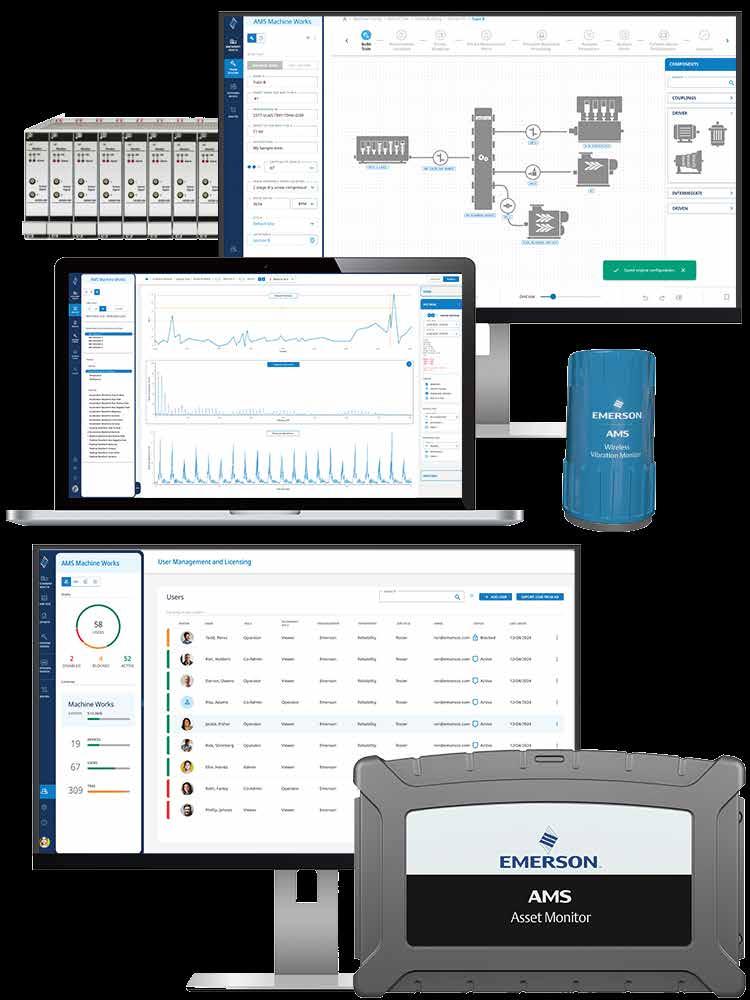

From Machine Tool, Injection Molding, Medical & Measuring to General Machinery applications, NSK offers the best technical solutions and a full range of engineering services. Every NSK Linear Guide, Ball Screw, Support Bearing and Super Precision Bearing is tailored to your specific needs. NSK, the only comprehensive engineering service supplier on the market, will take your business a step ahead. Find out more at www.nskeurope-motionsolutions.com.
Idnet has been focused on helping warehouses and stores modernize their operations for greater efficiency and adaptability since its founding in 1991. Their mission is to improve customers' work routines and increase profitability by minimizing human error through tailored IT tools and enhanced ergonomic solutions.

In 2021, Idnet introduced a high-tech mobile workstation with integrated IT solutions for businesscritical processes in environments such as e-commerce and warehouses. The workstation was devised to help expedite workflows and increase productivity by implementing an easy-to-use digital interface that
connects users to goods and materials handling. Easy to manage and highly focused on minimizing human error, the workstation hopes to transform the wayindustries manage their picking processes - with the help of Southco’s engineered access solutions
Due to Idnet’s need for process-optimized digital tools, such as pick-by-voice, pick-by-light, and autonomous robots with electronic labelling capabilities, the hardware chosen for this materialshandling workstation was required to withstand daily use with minimal upkeep.
Southco’s height-adjustable arms were needed to enhance general ergonomics and allow the end user to personalise their experience by easily adjusting the height, tilt angles, and overall function of the application.
In light of Idnet’s goal to “provide our customers with modern and future-proof logistics solutions”, says Tomas Pettersson, Product Owner - Idnet, Southco’s solution needed to promise high cyclelife position control features. Moreover, it must function in such a way, that the end user does not need to spend time readjusting the screen due to loose hinges or stiff structural properties.
Southco suggested their AV Monitor Mounts, which allow intuitive and ergonomic display positioning, enabling the operator to grab and move the screen without significant effort. They also securely hold the touchscreen in any position and resist unwanted movement when it is used.
When Idnet decided to introduce Southco’s AV-D32 height-adjusting arms to optimize their digital interface monitor, they were pleased to see that the application offered effortless movement across three different axes.
The AV-D32-30V142-50 is a wall-mounted application, and its industry-standard mount allows the end user to easily attach the monitor of their choice. After the monitor is installed, it can be effortlessly positioned with 344mm of vertical movement for optimal viewing angles based on user height.
Adding the AV–D40–33A144–50 single arm allows the monitor to tilt and swivel, decreasing the risk of glareand user fatigue due to changing working conditions.
Southco’s tilt and swivel articulating extension arms provide integrated positioning technology that enables the arm to function efficiently in the new workstation, which inherently requires durable hardware solutions that can withstand frequent use in high-traffic environments.
Furthermore, the constant-torque functionality of the chosen AV-D32 and AV-D40 creates a userfriendly experience that is crucial to Idnet’s end user ethos. With an arm that can withstand strong touch forces, vibration, and heavy loads, the AV series has proven to be the perfect fit. Southco’s ergonomic solution reliably holds the monitors of various weights in a neutral position.
With a smart, removable cover to allow power and display cables to be hidden within the application, removing snag hazards and allowing users to keep their workspace permanently clear of clutter, Southco’s intuitive, minimal-intervention designs have helped Idnet provide a system that withstands the test of time, while providing valuable, ergonomic solutions for the goods handling industry.
Finally, to support Idnet’s focus on autonomy, the AV series’ toolless operation was also incredibly valuable to the final design and ensured longlasting satisfaction with their customers.
Southco’s AV adjustable arm and wall mount application reflects a highly capable piece of technology to suit all varieties of manual workloads, whilst concurrently ensuring that all bases are covered, from beautiful aesthetics to durable practicality.






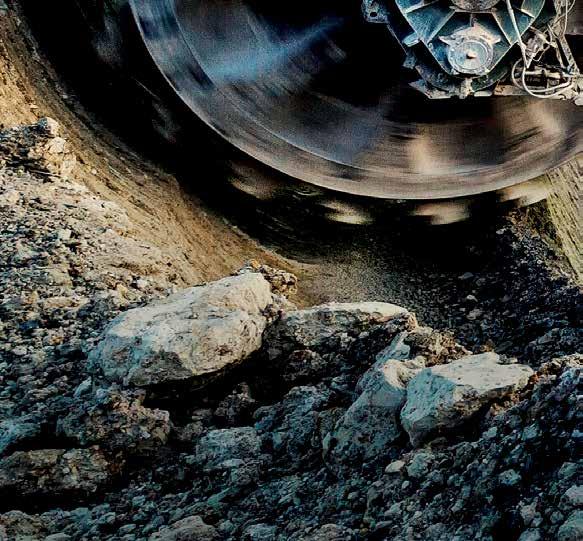









Power rating up to 3.700 kW




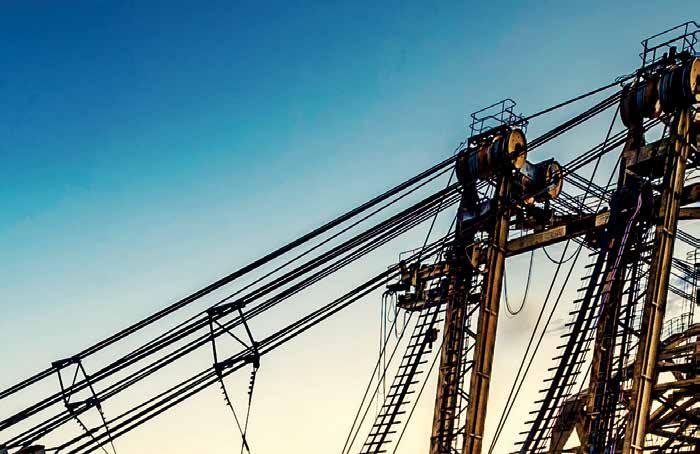



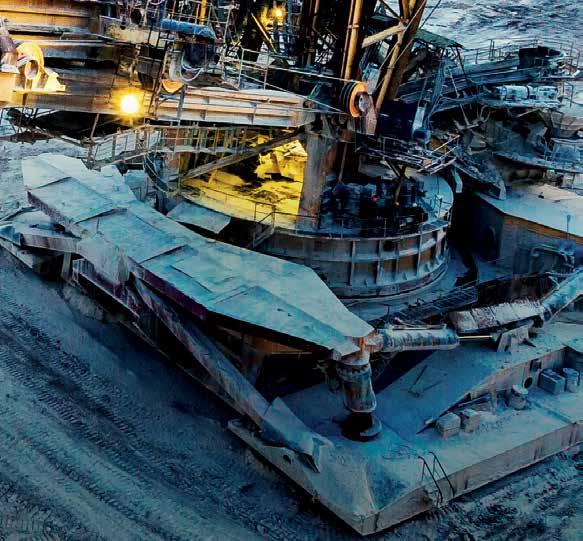
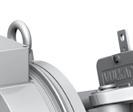

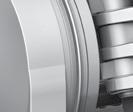
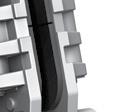


Braking Torque up to 12.450 Nm


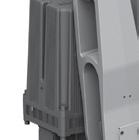
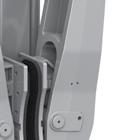















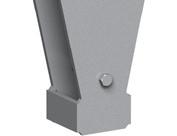
Braking torque up to 29.900 Nm HYDRAULIC BRAKES
Braking torque up to 400.000 Nm
Clamping force up to 400.000 N
Torque up to 578.000 Nm
Ziehl-Abegg received a delegation of leading professors in AI from all over the world and gave an impressive demonstration of how innovation and industry interconnect. The scientists were impressed with the technology behind what are supposedly simple products such as fans – and how artificial intelligence can set new standards.
The interchange of ideas between science and industry formed the focus of the visit to Ziehl-Abegg by professors in AI from some of the world's most renowned universities. The technology leader was the only company on the agenda during the group's visit to Germany. The visit was initiated by the Global Technology Forum organized by the Technical University of Munich (TUM), Campus Heilbronn. The event brought leading experts from universities of excellence in Paris, Oxford, Stanford, Zurich, Jerusalem, Waterloo and Singapore to Heilbronn-Franken.
Prof. Dr. Dr. h.c. Helmut Krcmar, founding dean of the TUM Campus Heilbronn, stressed the importance of the cooperation: “We scientists are always looking for contact with industry. I am pleased that Ziehl-Abegg has allowed us an in-depth look behind the scenes. For me, linking research and teaching with industry is the key issue – after all, it does benefit both sides.”
The focus of the visit to Ziehl-Abegg was a guided tour of the state-of-the-art laboratory with the world's largest combined test chamber for fans. Achim Kärcher and Johannes Seebach gave the guests a presentation of the company's latest technological developments. Wolfgang Mayer, Chief Development
/ Technology Officer of Ziehl-Abegg, was enthusiast in summing up the visit: "It was a great honour for us to have the opportunity to provide the AI experts from such renowned universities with an insight into our industrial company. I am especially proud of how astounded the scientists were at the complexity of what is supposedly just a simple fan.”



The dialogue between the AI experts and the experts from Ziehl-Abegg offered insights into the practical challenges and potential applications of artificial intelligence in ventilation, control and drive technology. “The scientists were very open and willing to talk about their research," says Mayer. “Encounters such as these not only reinforce our innovative capability but also strengthen the link between science and industry.”
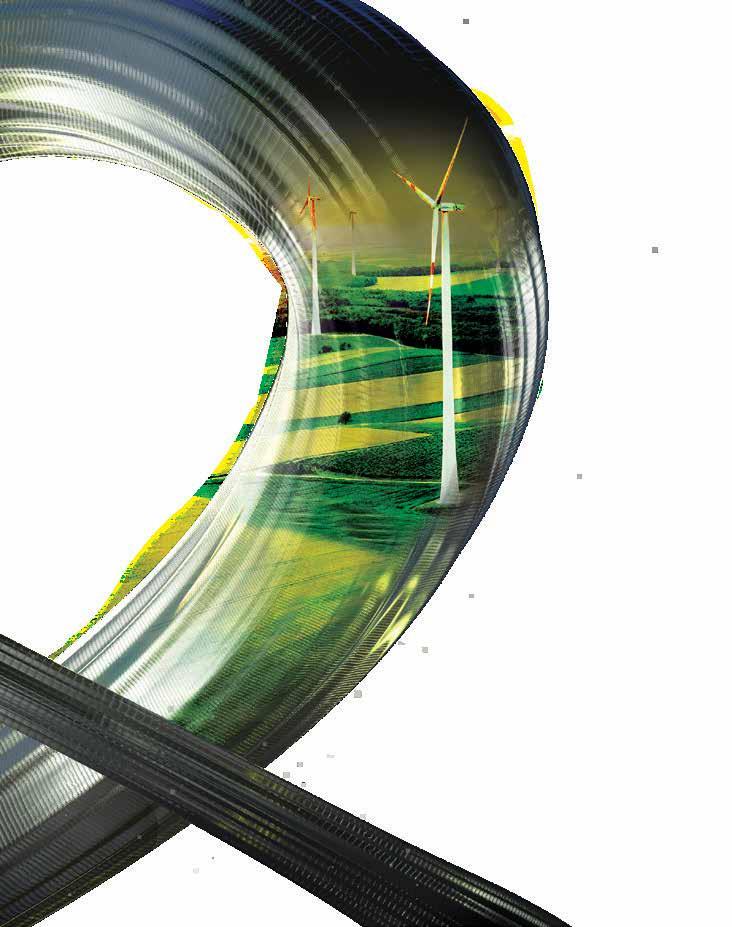
The Global Technology Forum highlights the importance of an interchange between academic excellence and high-tech companies. With ZiehlAbegg acting as host for this delegation of highcalibre individuals, this once again underlined the great importance the company attaches to technological development and the application of artificial intelligence. The fact that Ziehl-Abegg will be announcing the “AI Communication Award” once again in 2025 was a fitting tribute.

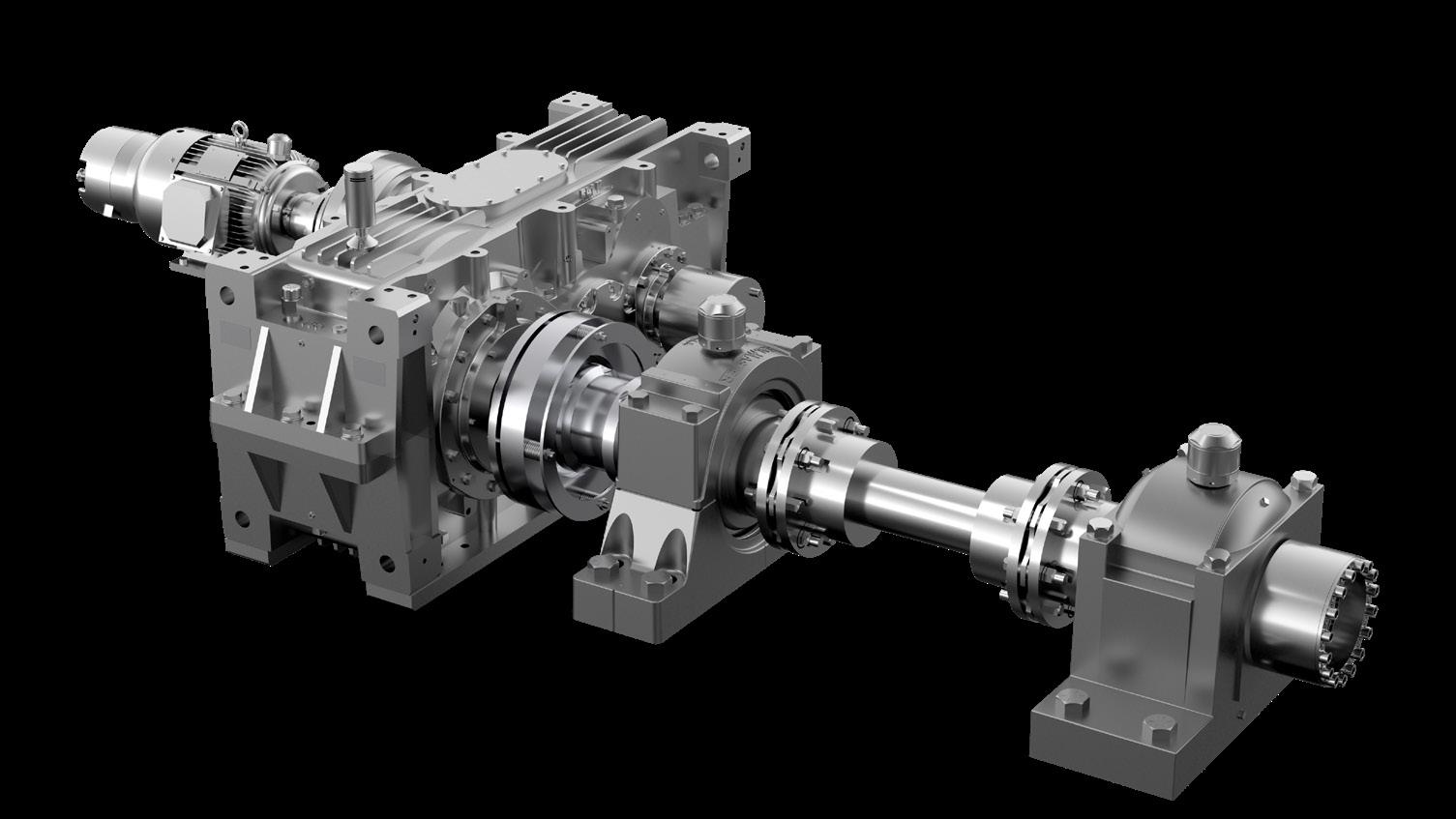
The new Regal Rexnord introduces engineered-to-order industrial powertrains, delivering power for the most demanding of applications
It took the combined strengths of our new company to develop complete industrial powertrain solutions, custom designed and built for applications across the full spectrum of horsepower and torque. From start to finish, Regal Rexnord™ electromechanical industrial powertrains are designed, configured, integrated and optimized for your unique applications, opening the door to new ideas and unlimited possibilities. Read about Regal Rexnord and our prominent brands. Go to regalrexnord.com.
Rexnord® Sealmaster ® Stearns® Kop-Flex® Falk®
Link-Belt® Marathon® Perceptiv™ Browning® Tollok®
Creating a better tomorrow™...
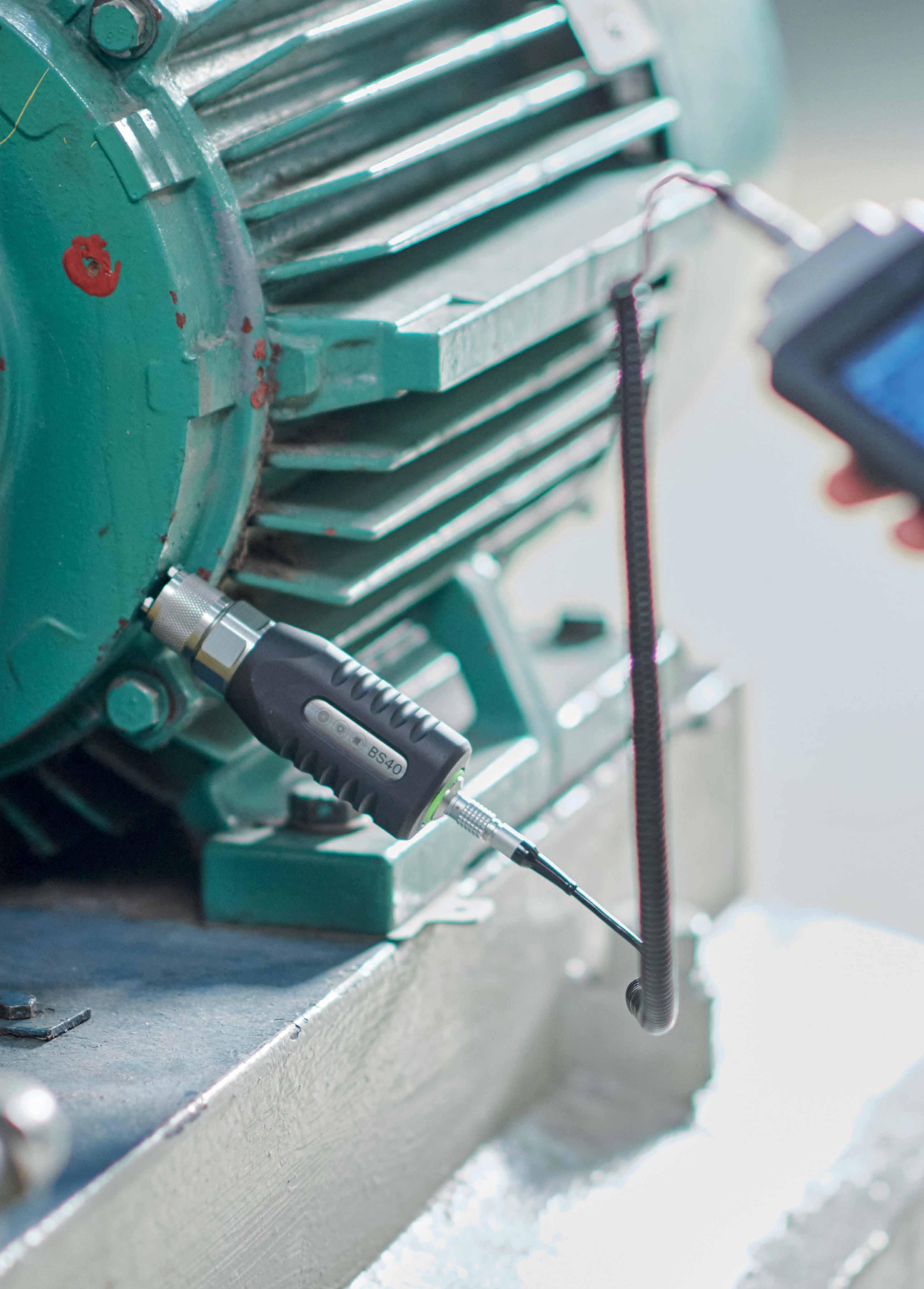
www.sonotec.eu


Alva Industries (Alva), a manufacturer of frameless motors and owner and creator of FiberPrintingTM technology, has today announced a new partnership with RLS, the global rotary and linear magnetic sensor manufacturer, to provide framed motor evaluation kits for rapid motor and encoder testing and technology evaluation.
The evaluation kits are available for motor sizes 39mm,75mm and 130mm outer diameter, and include an Alva SlimTorq™ slotless motor and RLS AsksIM™ absolute magnetic encoder. Contact Alva today to make an inquiry.
SlimTorq™ is a range of torque motors ideal for highprecision and high-speed applications on land, sea, air and space. SlimTorq™ motors are manufactured by Alva’s revolutionary FiberPrinting™ technology which enables ironless and slotless motor windings with up to 60% copper fill factor, setting a new standard in precision, torque density and adaptability.
AsksIM™ encoders are non-contact highperformance off-axis absolute rotary encoders designed for applications with limited installation space. The compact units provide true absolute
position measurement, with built-in self-monitoring and immunity to external magnetic fields.
“RLS encoders and Alva motors have a great synergy in terms of delivering high-performance in a compact and low-profile form factor,” said Martina Gajsek, Marketing Manager at RLS. “We are proud to collaborate with Alva to provide our products to OEMs enabling them to improve the performance of their systems for high-precision applications.”
“We understand that engineers are often working to tight timeframes and that every day in the development is critical,” said Nicolas Giraudo, CCO at Alva Industries. “That’s why we have partnered with RLS to provide readily available evaluation units so that our customers can quickly test and validate our technologies.”
• Simple operation via perma CONNECT
• Configuration, control and maintenance from a distance
• Management of up to 2,000 lubrication points via Gateway LONG RANGE
• LED visible all round signals functioning and errors
• Backlit LCD display







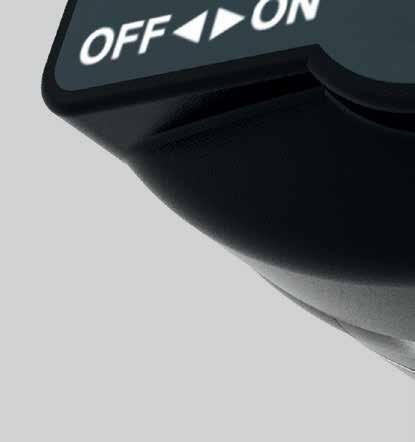




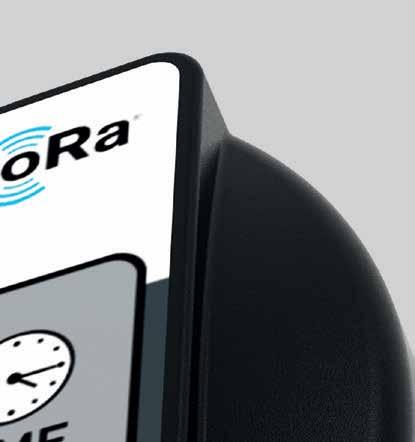


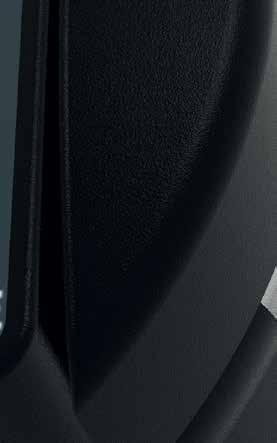

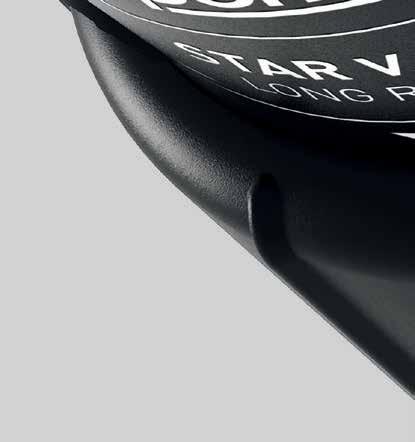











The HARTING Technology Group, a technology and market leader in industrial connection technology, is pleased to support the extension of the IEC 63171-7 standard and to define the new connector standard for Single Pair Ethernet. This extension covers a range of connectors based on a uniform SPE data container that forms the basis for the global standardisation and interoperability of Single Pair Ethernet (SPE) systems.
For years, the HARTING Technology Group has been committed to the development and implementation of these cutting-edge connectors. The new IEC 63171-7 SPE connectors provide universal device connectivity that promotes convergence in an All Electric Society. Optimised compatibility leads to consistency in

communication, increases efficiency, ensures cost savings and ultimately increases productivity. The full range of IP 20, M8, M12, heavy-duty connectors Han® and also hybrid designs based on a universal data container offers solutions for many sectors and is not limited to purely industrial production applications.
‘We are proud to be part of this important development and to actively shape the future of convergent connectivity for an all-electric society,’ explains Jörg Scheer, Managing Director of HARTING Customised Solutions at HARTING. ‘Our innovative solutions meet the high demands of modern applications and offer our customers long-term security and clarity.’
The initiative by the PROFIBUS Nutzerorganisation e.V. (PNO) to expand the IEC 63171-7 standard is a decisive step for the success of Single Pair Ethernet. HARTING will continue to work closely with the PNO, the international standardisation bodies and other partners to promote the implementation of this expansion and to fully exploit the advantages of SPE technology.


Regal RexnordTM Corporation is a global leader in the engineering and manufacturing of industrial powertrain solutions and power transmission components, serving customers throughout the world. Our solutions are found in cement, food and beverage, intralogistics, agriculture, material handling, construction, mining, automotive, forestry, and more. Our essential products help keep systems running in mission-critical applications worldwide, while being sustainable and energy efficient.
Our teams of expert engineers have years of industry knowledge and experience, ensuring innovative solutions that target your most specific needs. We know the ins and outs of these applications, from the

Rex® high performance roller, leaf, and engineered chain exhibit outstanding performance in challenging conditions. Rex RN Series metric mounted spherical roller bearings with SHURLOK tapered adapter were designed shaft-ready for ease of use and durability.


smallest bearing to the largest belt. Regal Rexnord partners with our customers to carefully select the products that solve their toughest challenges. Our flagship brands have amassed billions of hours of reliable operation and are well-known throughout the industry for their high quality.


CENTA® is the world’s leading manufacturer of torsionally soft couplings, primarily used in marine, industrial, and wind.
Euroflex™ has a strong reputation of high-performance disc couplings, used in power generation, gas compression, and industrial process machinery.





Jaure™ family of flexible couplings and transmission elements include the LAMIDISC, MT, and BAREFLEX European brand leaders since 1958.
McGill® Metric Camrol® cam followers feature LUBRI-DISC® seals that provide positive protection against contamination and loss of lubricant.
Rollway® bearings play a significant role in the open ball and roller bearing industry, providing high quality bearings to OEM and end users for over 100 years.

Link-Belt® mounted spherical roller bearings prove their performance with outstanding misalignment capabilities, field adjustable clearance, and excellent sealing options.
Sealmaster® mounted ball bearings are engineered to reduce downtime. The IP69K-rated PN Gold™ offers corrosion resistant solutions for washdown environments.
System Plast® is a global leader in high quality plastic conveyor chains, modular plastic belts, and industry-leading conveying components.
Rexnord® KleanTop® belts provide a plastic modular belting solution for conveyor applications requiring adherence to strict hygiene regulations.
Rexnord MatTop® & TableTop® chains are engineered to satisfy a wide range of conveyor applications, with straight running and side-flexing chain designed to convey flawlessly.
Perceptiv™ condition monitoring enables our customers to improve productivity, increase uptime, and enhance safety by monitoring equipment from a distance.
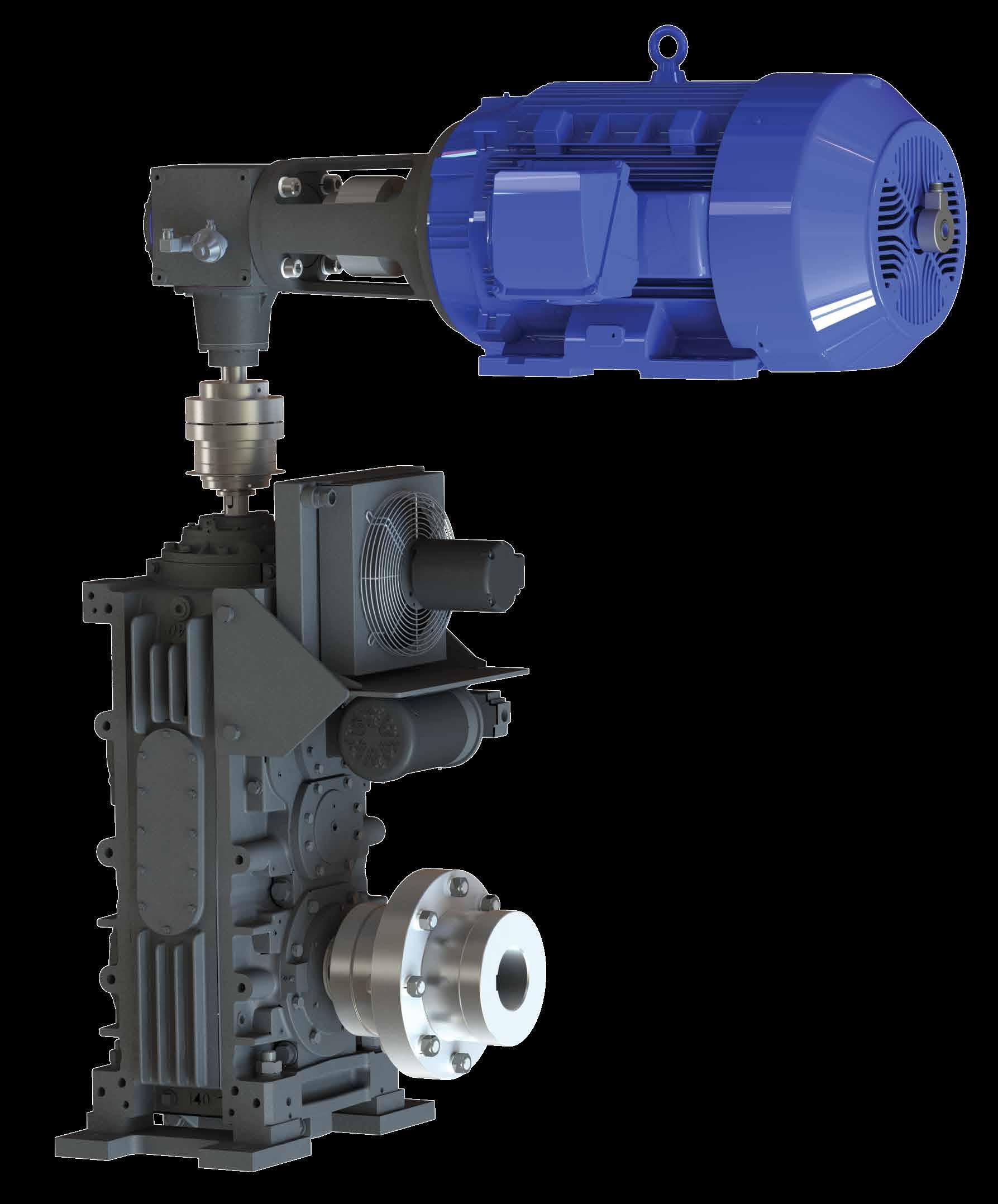
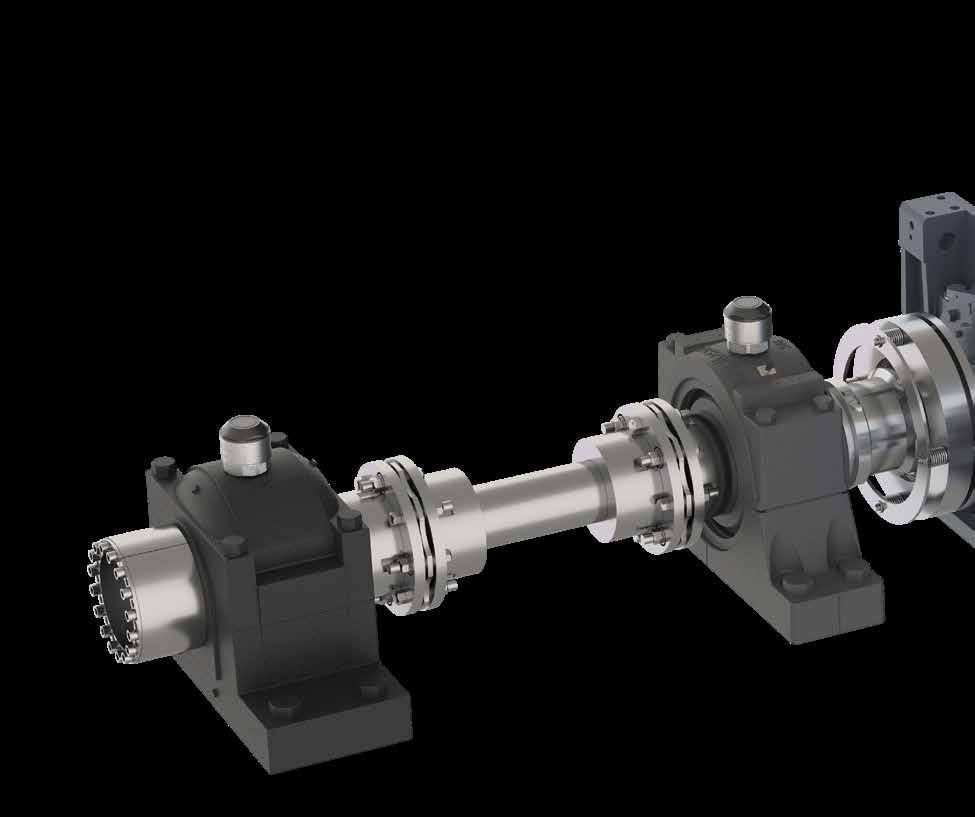




With manufacturing, service centers, and engineering support across the world, Regal Rexnord can meet you where you are. We maintain stock in Europe to ensure our customers have what they need. Our global reach ensures that wherever our customers are in the world, they receive the same expert level of service and reliability.
Regal Rexnord designs and manufactures the products that keep your applications running. Our expertise and our strong portfolio of brands make us a trusted source for sustainable, durable, problem-solving solutions. Our brands and products have the longevity needed to maintain industries around the world.
More information about Regal Rexnord™ can be found at www.regalrexnord.com
To ensure that BearingNews and Motion+Drives magazines are doing their part to protect the environment, the parent company, iMotion Media, has developed a strategy to offset the carbon footprint of its printed magazines. The twofold approach includes a fully supported tree planting campaign in conjunction with each newly released edition, and the use of recycled paper in the printing process.
Sustainability is no longer just a buzzword. Members of the globalcommunity have become increasingly aware of human impact on the environment. As a result, a massive movement is driving private sector companies to responsibly manage their environmental, economic, and social resources to safeguard the well-being of future generations.
The term ‘sustainability’ encompasses a large swath of efficiency objectives that aim to go beyond the thresholds of carbon neutrality. Companies must fulfill further economic and social obligations by devising less wasteful practices. When discussing the printing of magazines, there is long-term value achieved by responsibly implementing environmentally friendly solutions associated with the use of paper. The paper industry has focused its efforts on the sustainability of raw materials, processes, and products. Highlighted

within the industry’s strategy is the promotion of sustainable forestry practices and responsibly harvesting renewable raw materials. Tree planting is considered one of the most effective ways to combat global warming, as forests naturally reduce atmospheric carbon dioxide (CO2) by removing it from the air through photosynthesis. In line with this strategy, iMotion Media has adopted ‘tree planting for reforestation’ as the most effective method to reduce the carbon footprint associated with the printing and distribution of Bearing News and Motion+Drives magazines. In careful coordination with the release of each printed edition, a tree planting campaign will be launched to help restore forests and offset the use of natural wood materials used in paper production. In addition, iMotion Media is supporting the use of recycled paper in the printing process to reduce dependence on new materials. It will also continue to promote the currently available digital magazine options.
Thanks to the use of recycled paper and certified companies dedicated to carefully managing wood harvesting, there has been a decline in global deforestation. And while there are positives to both recycled paper and the responsible production of new paper, recycled material contributes significantly more to global social and economic sustainability goals.

iMotion Media is happy to be a part of a forward-thinking movement with ambitions for a greener future. Through its broad reach within the Bearing. Power Transmission, and Motion Control Industries, iMotion Media intends to create an infectious optimism that will compound progress towards greater sustainability.


